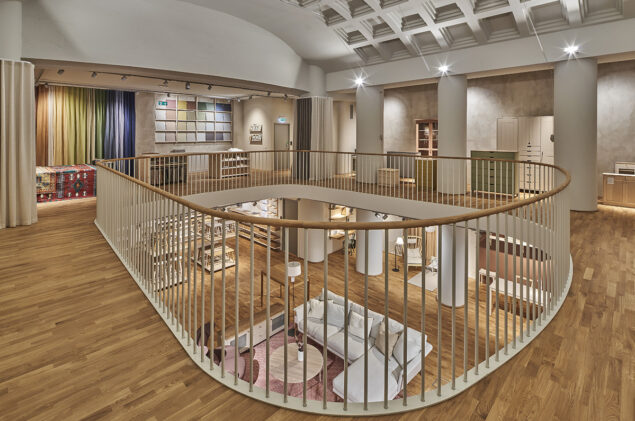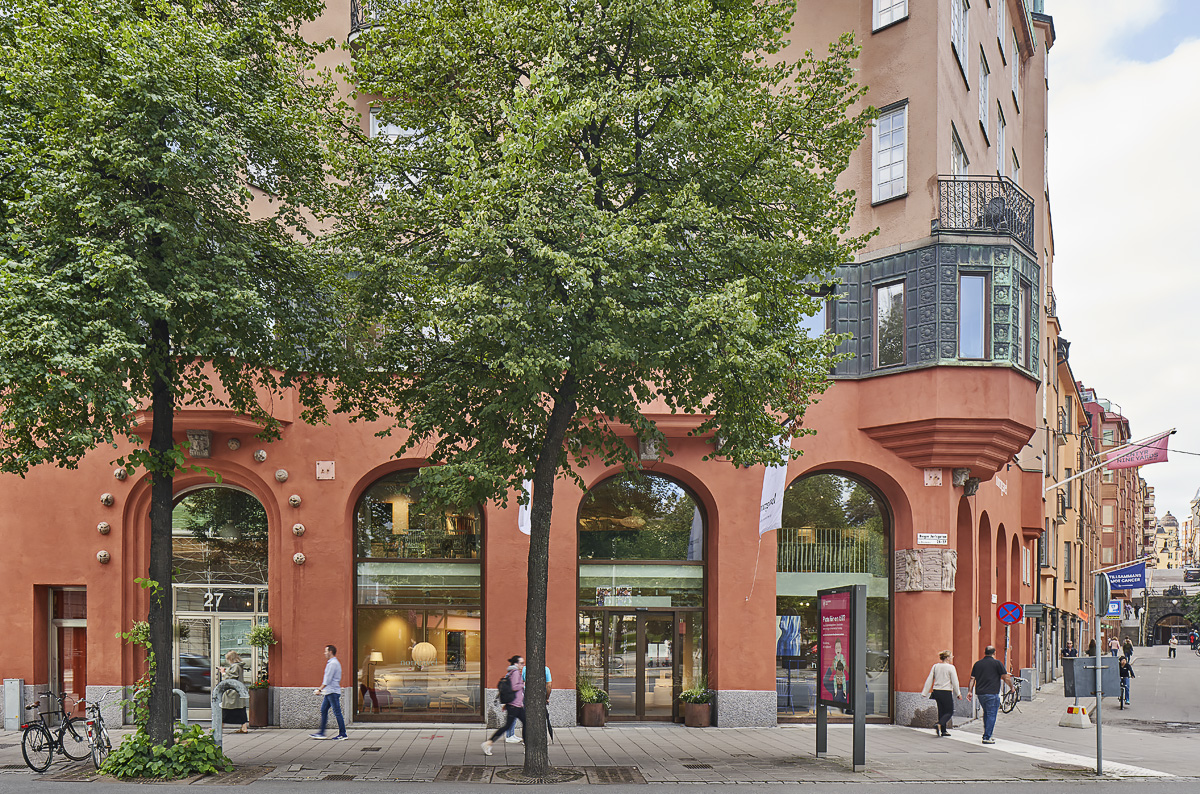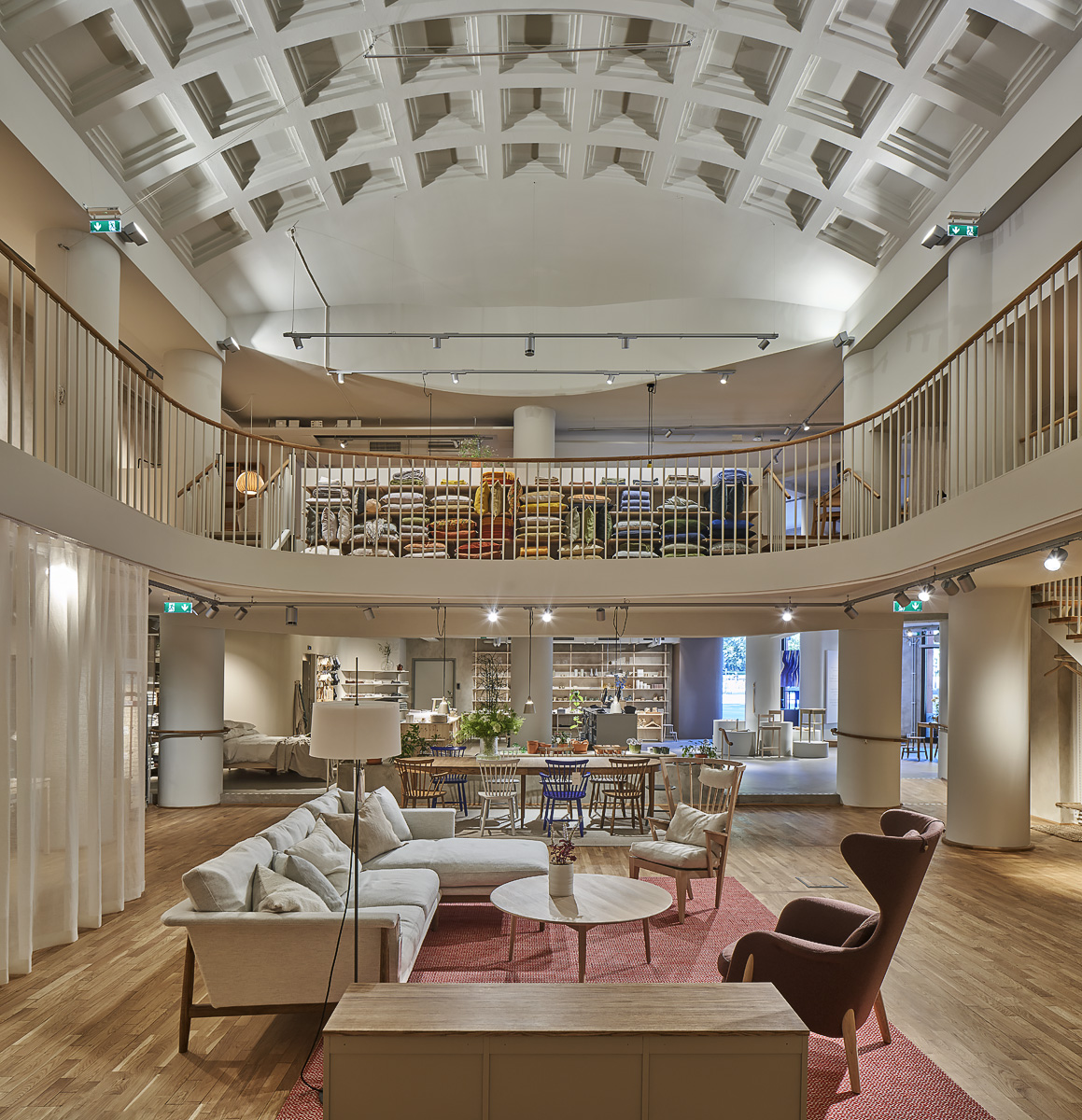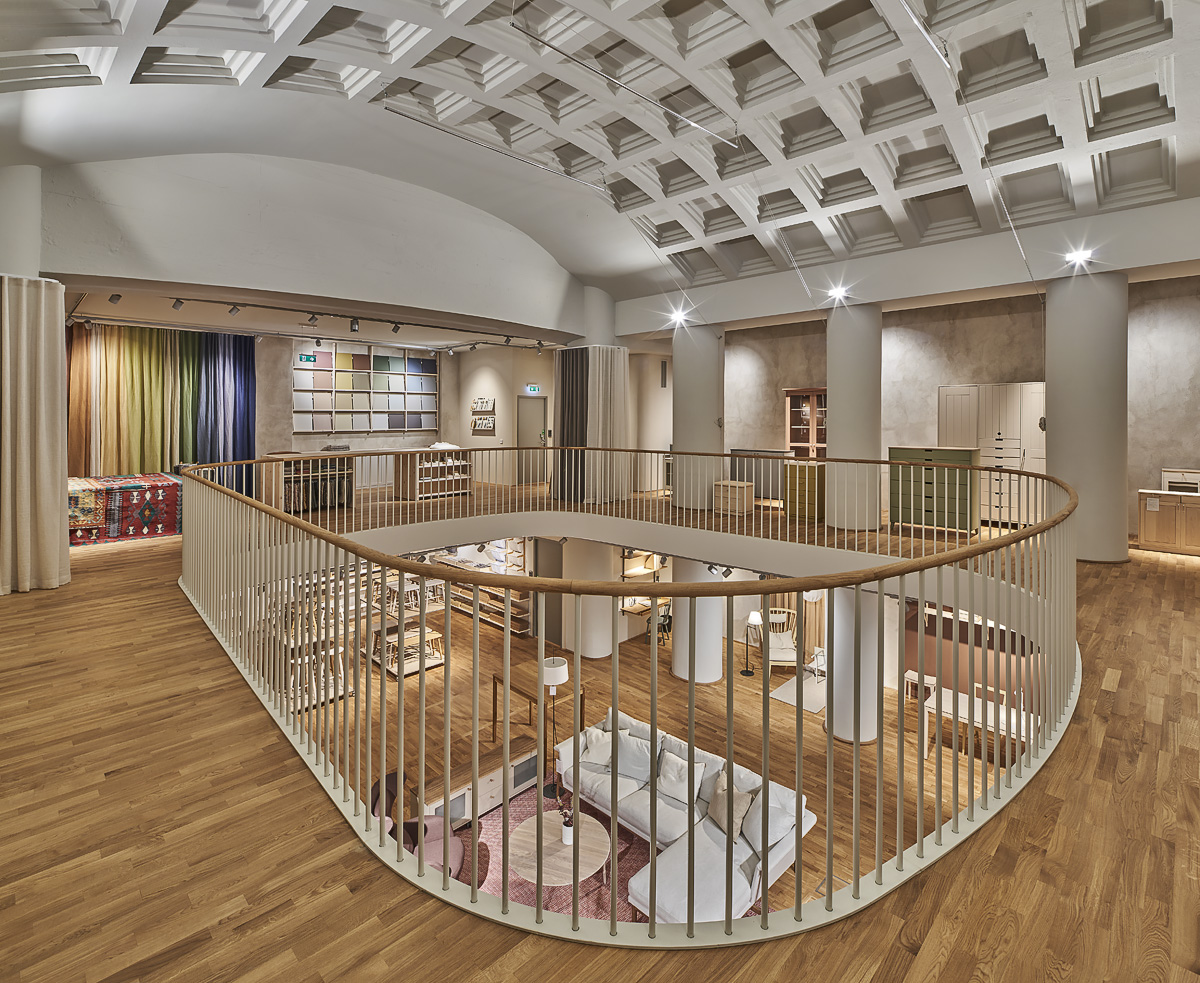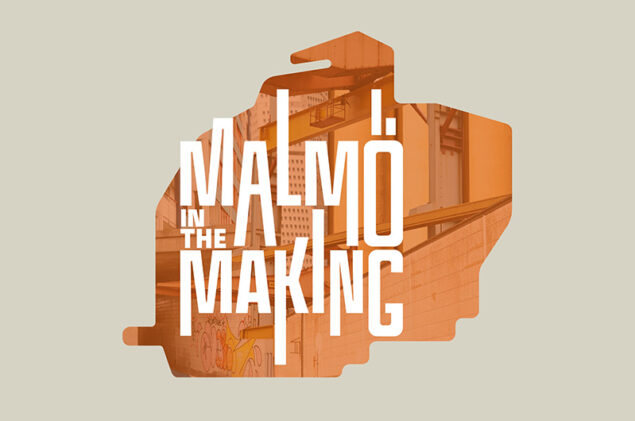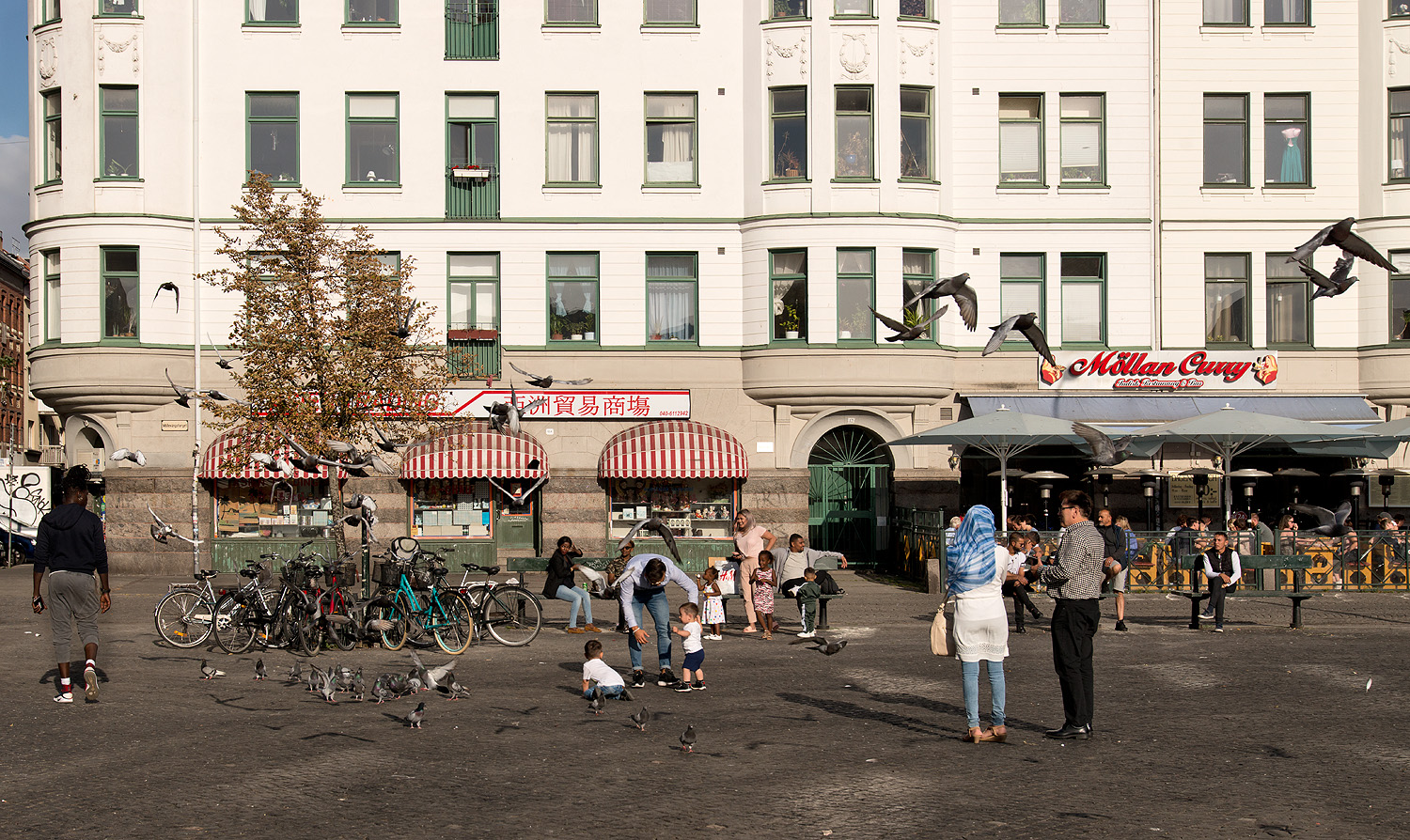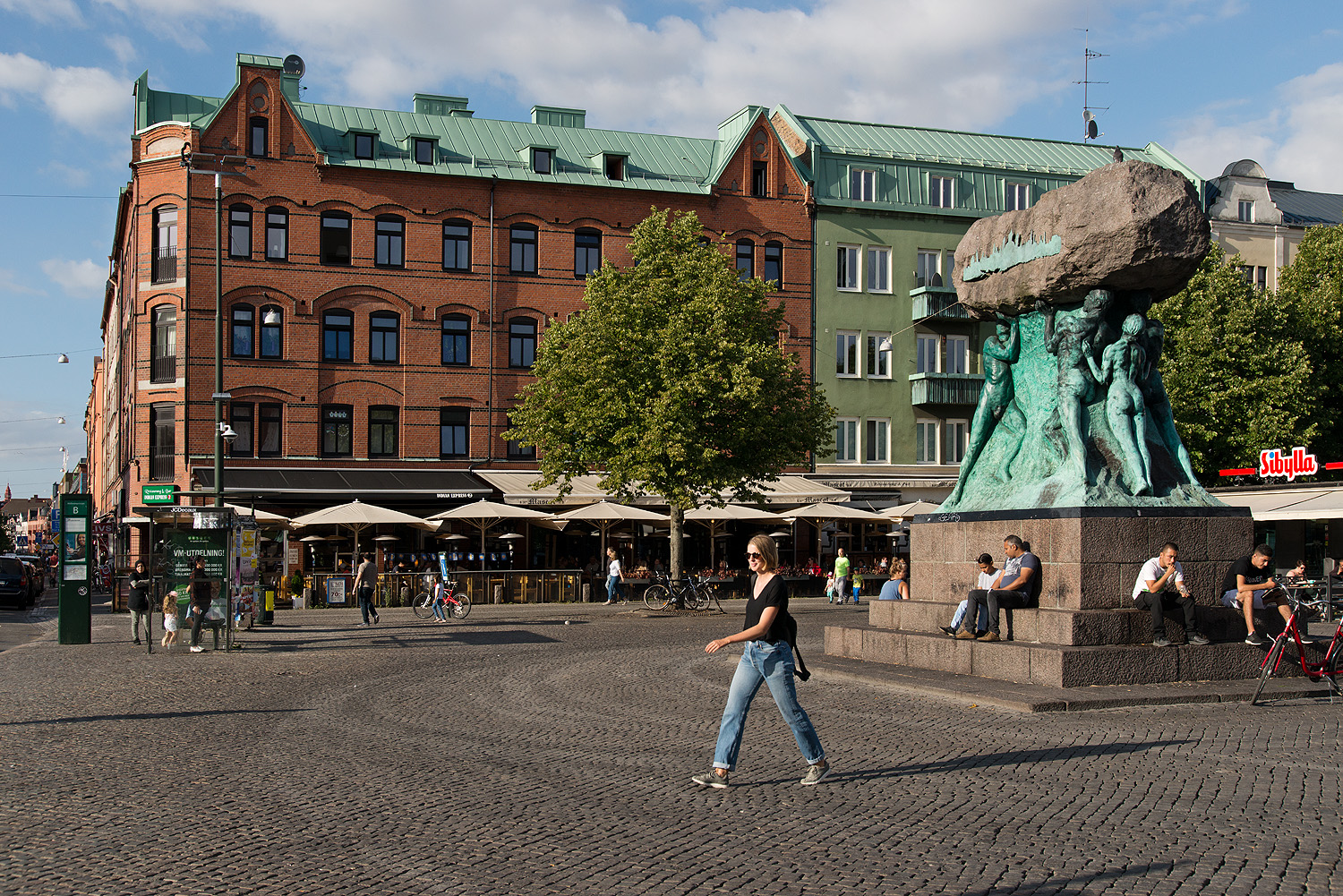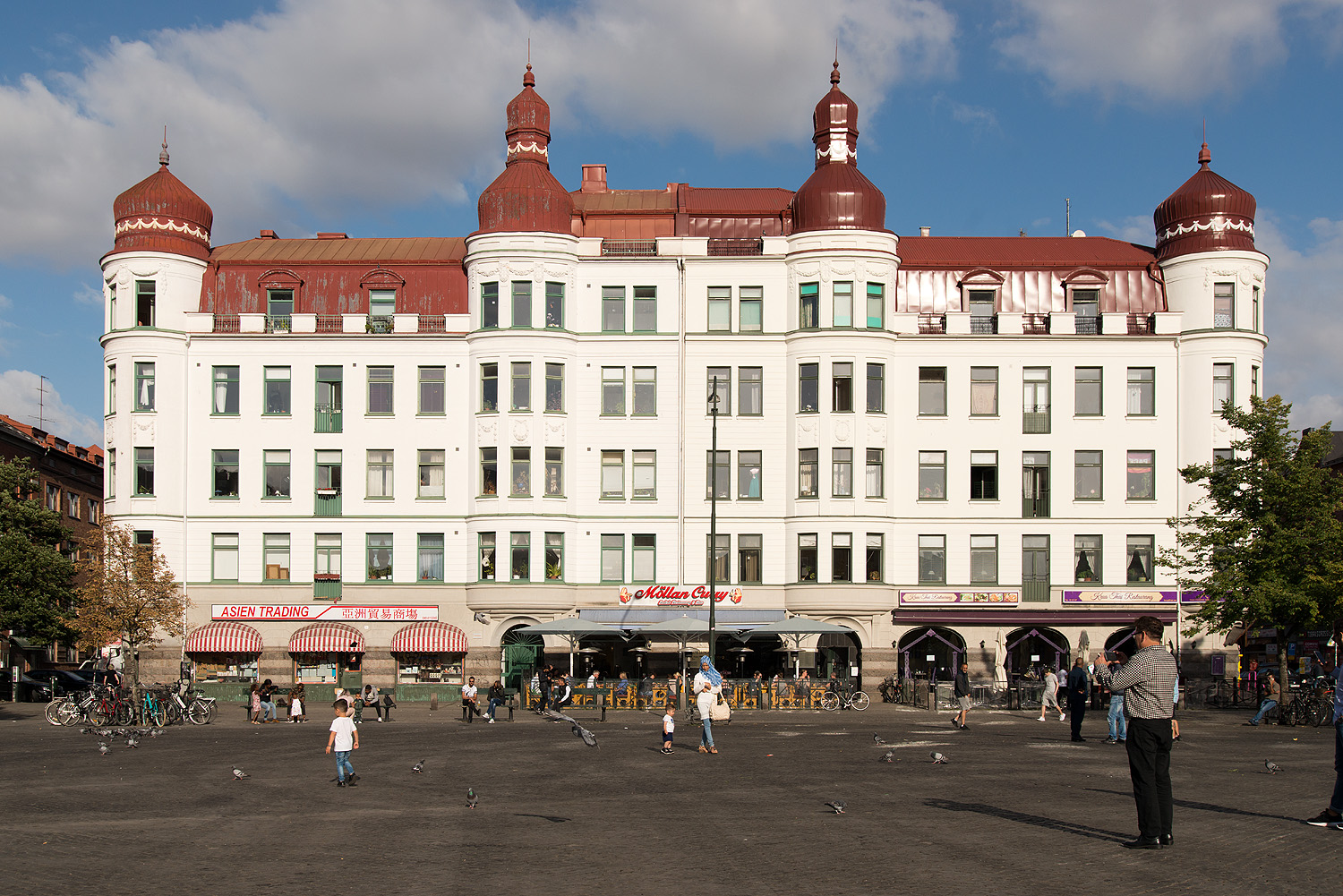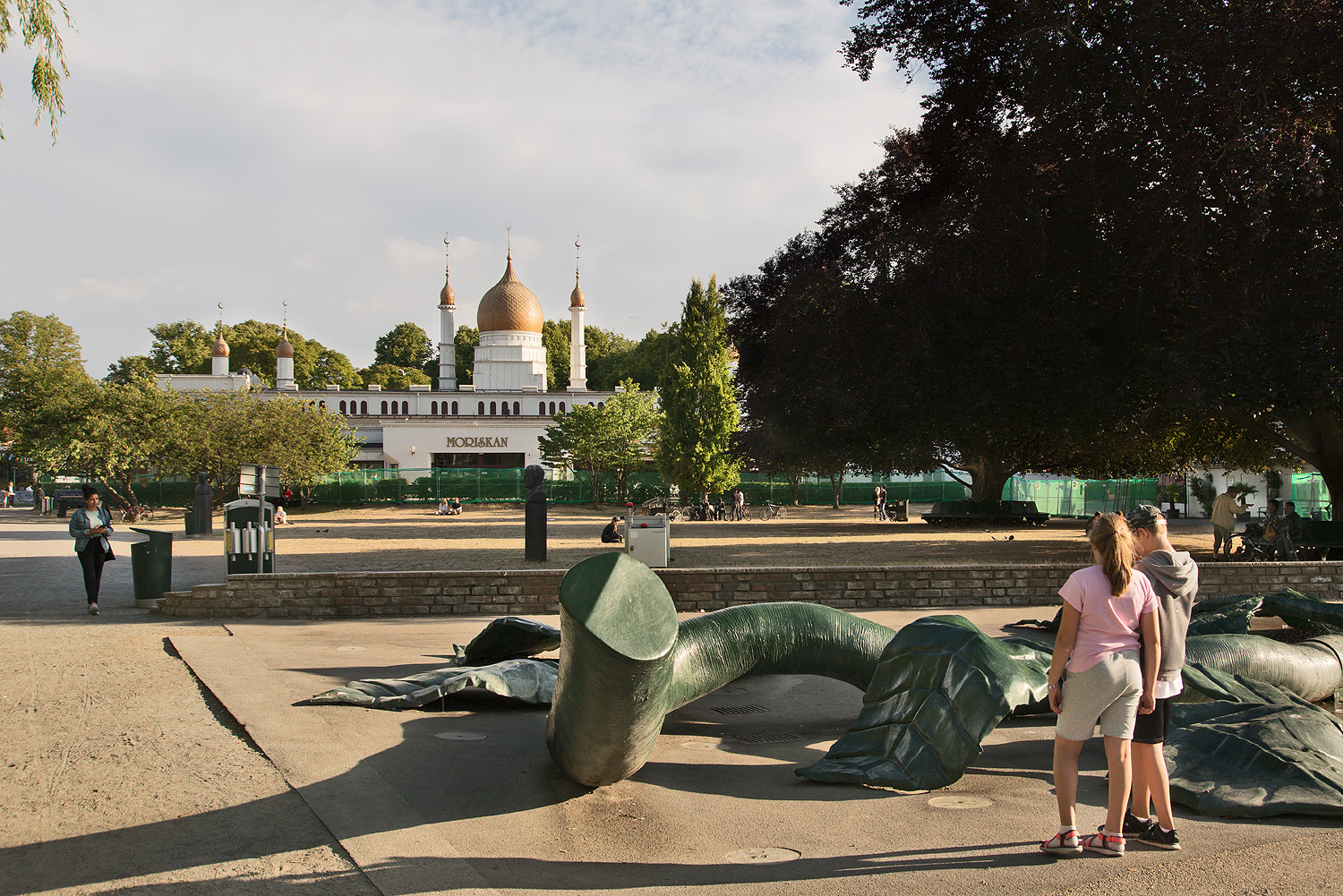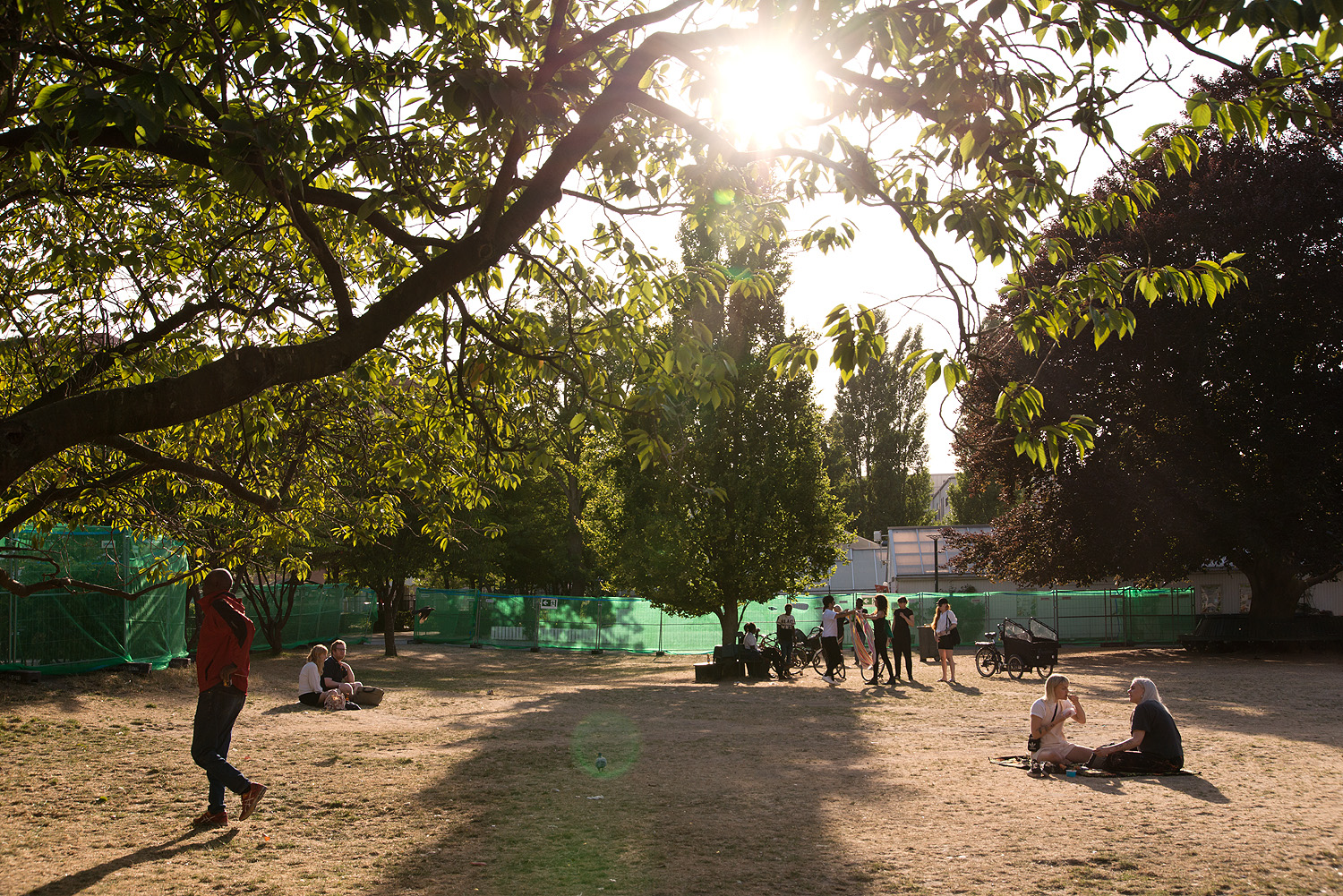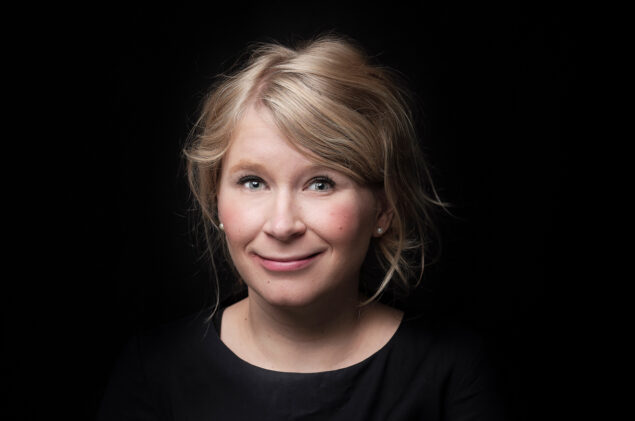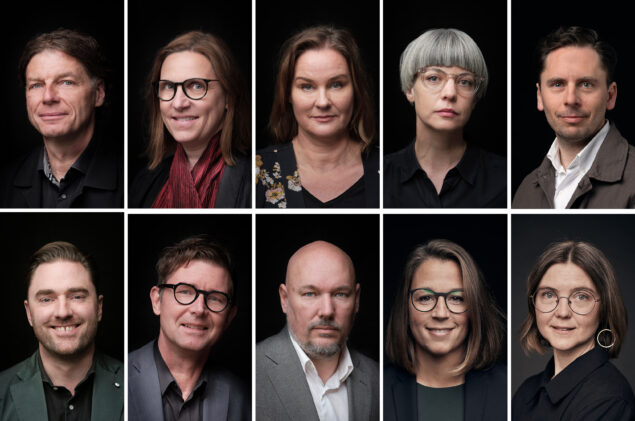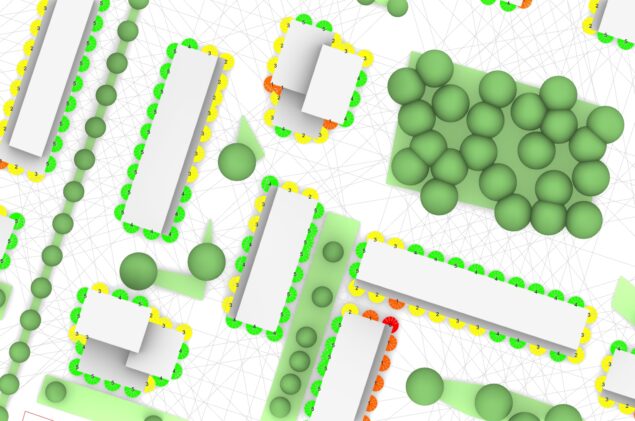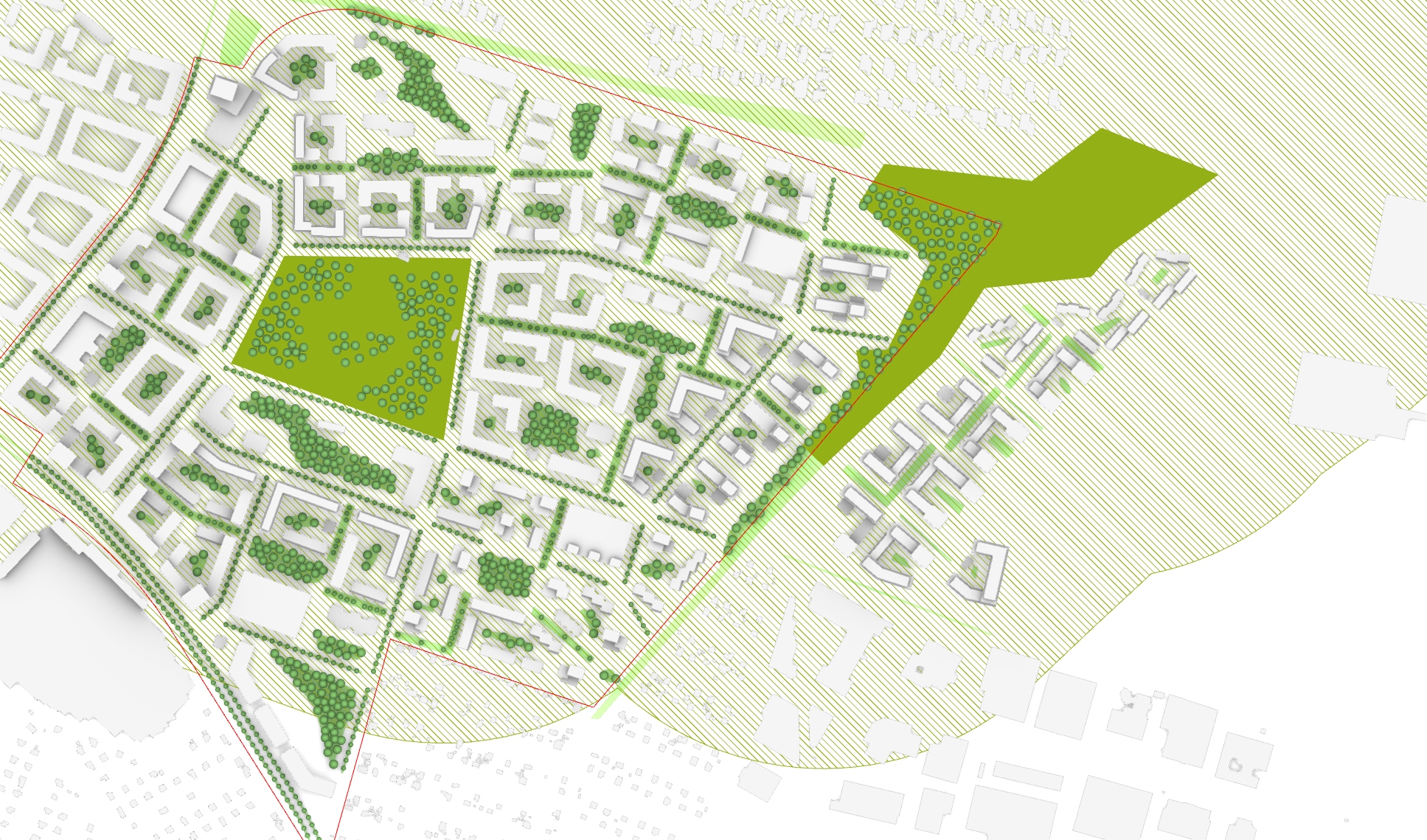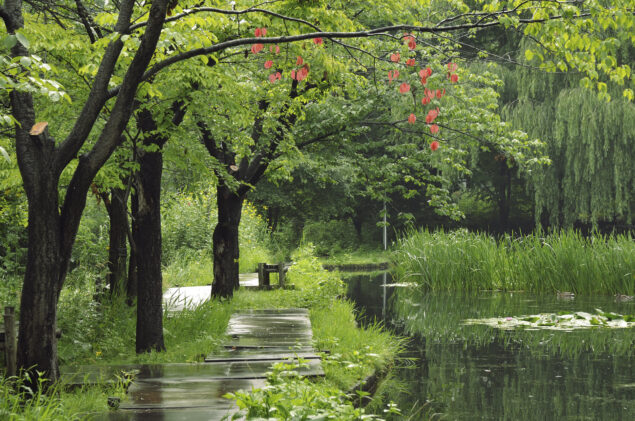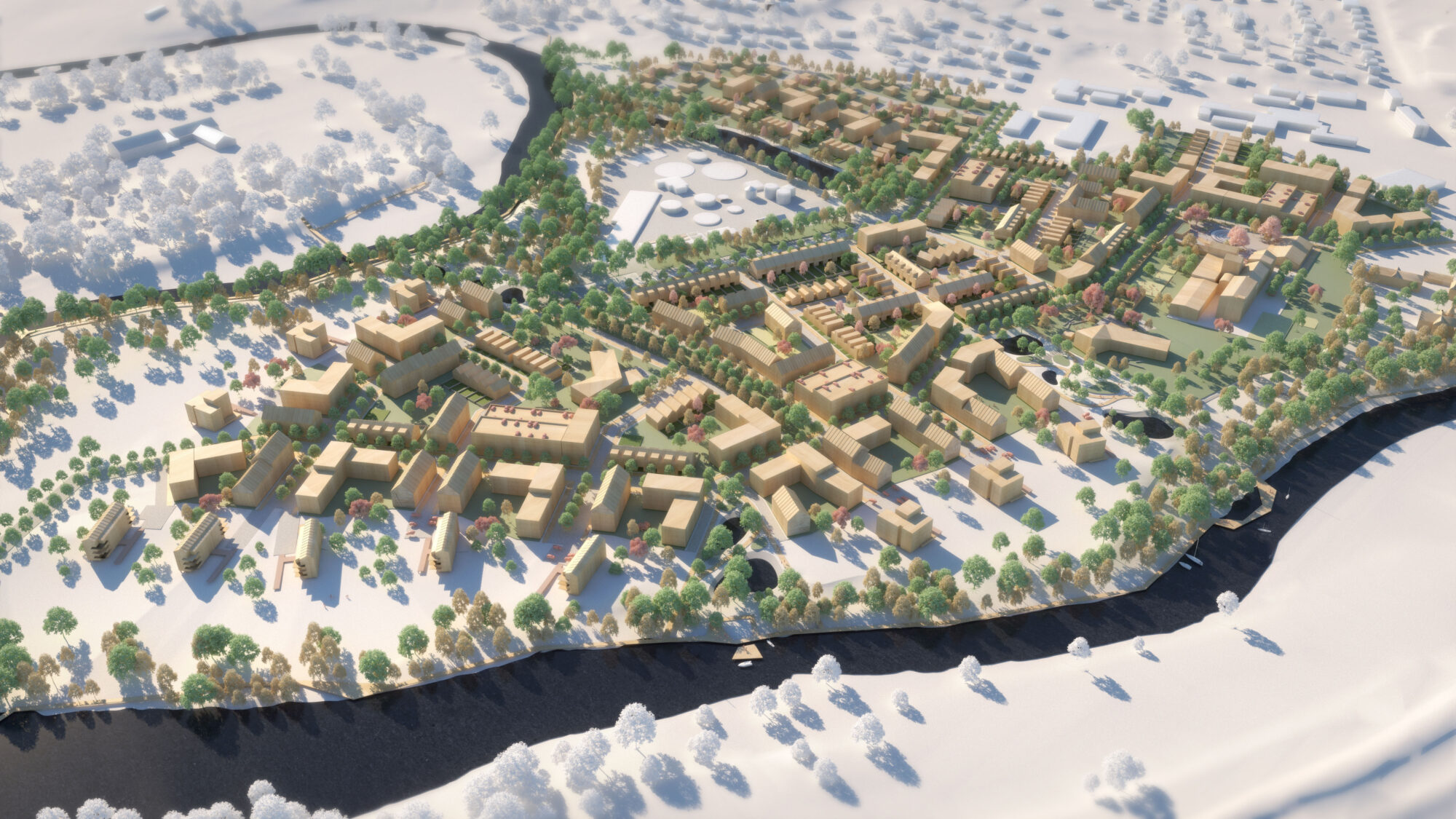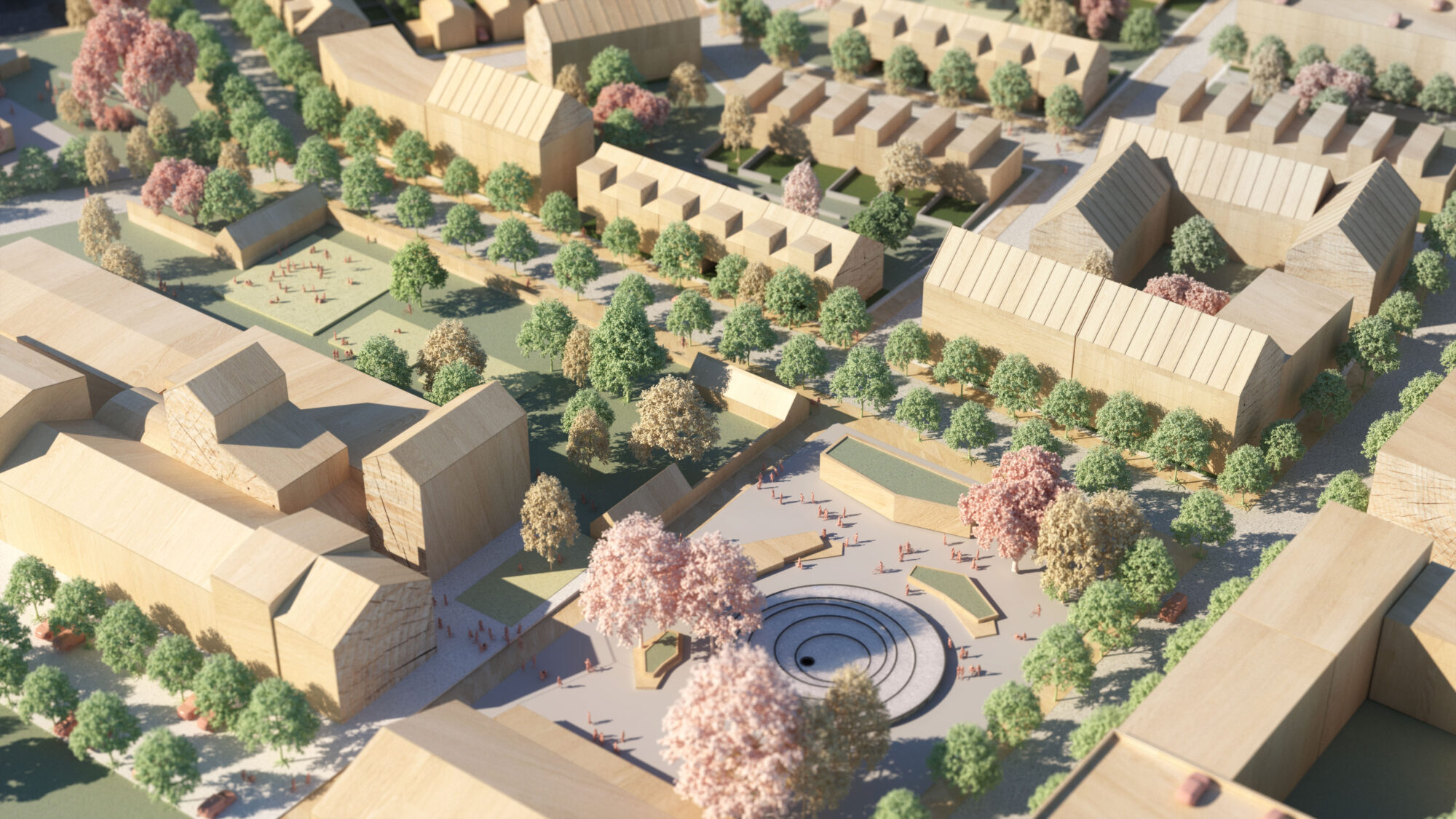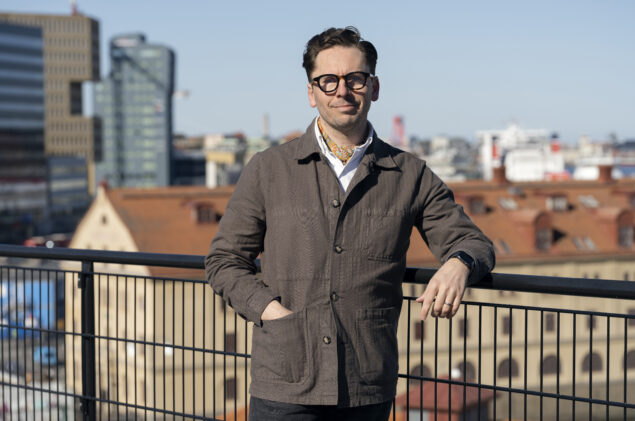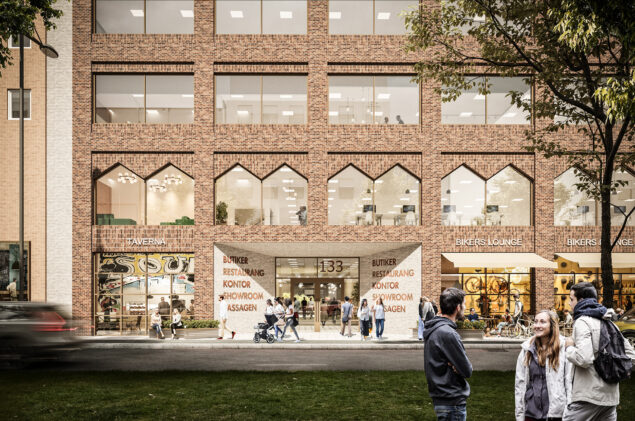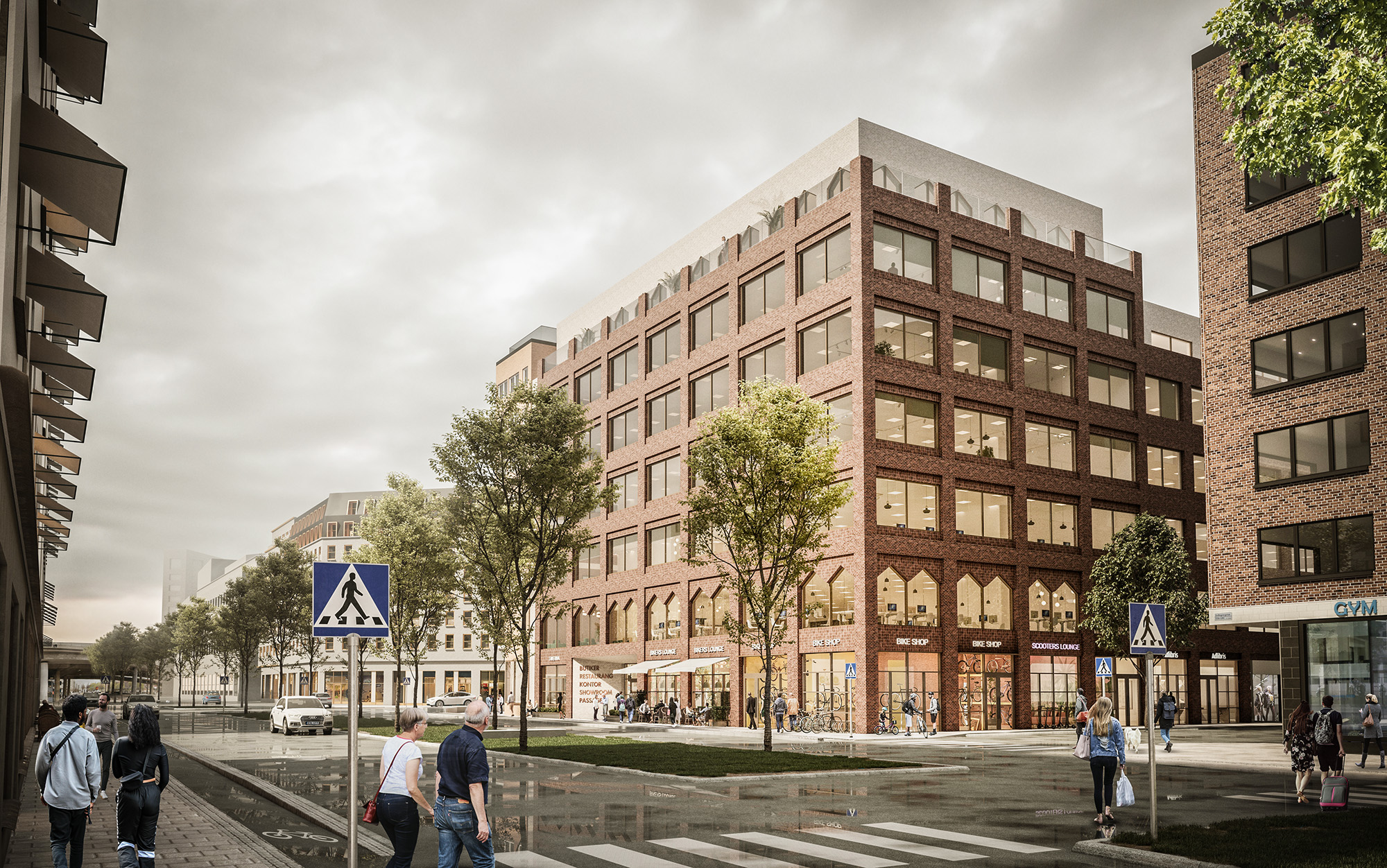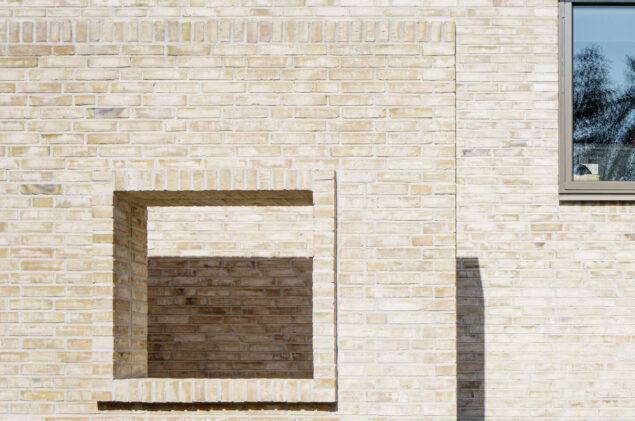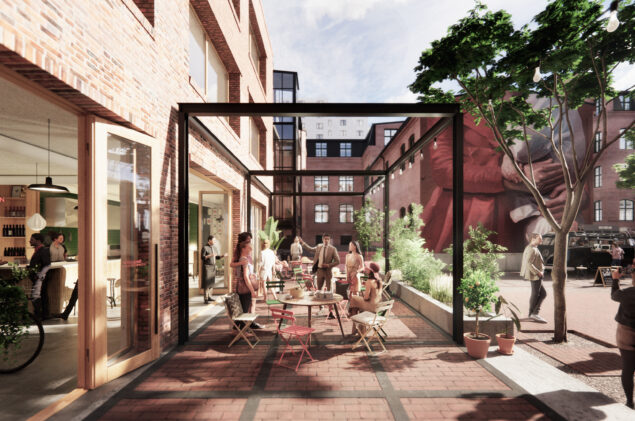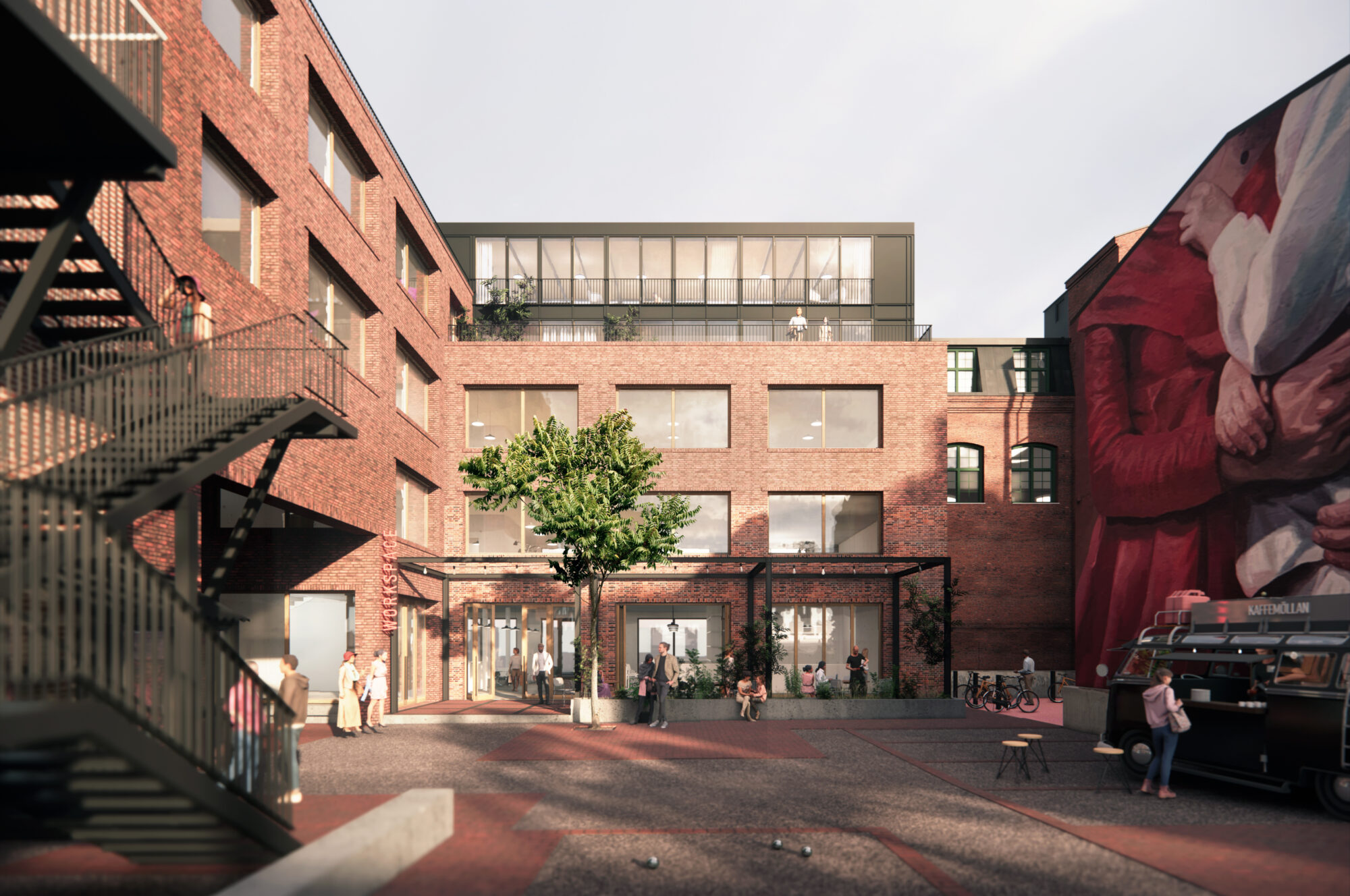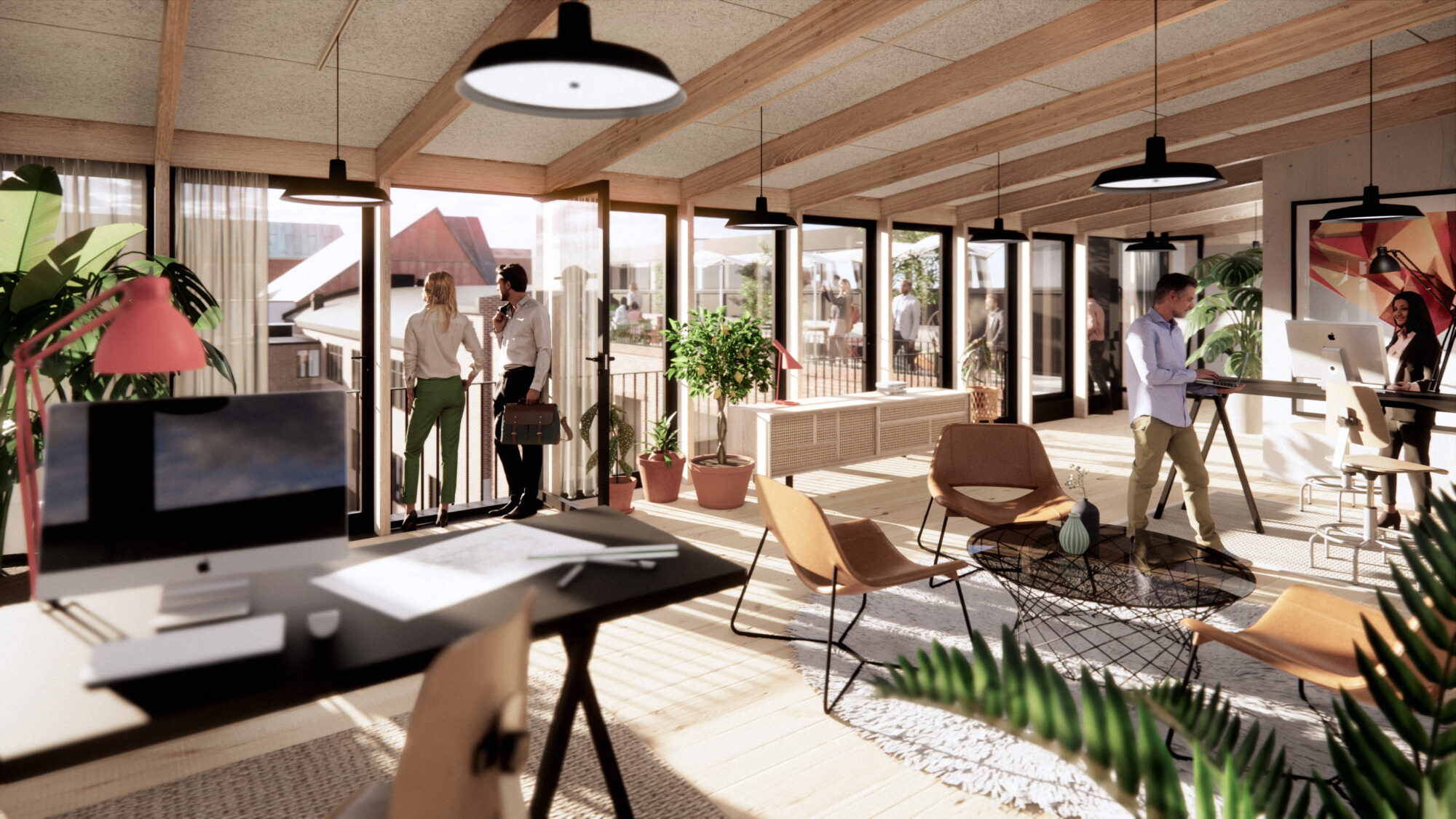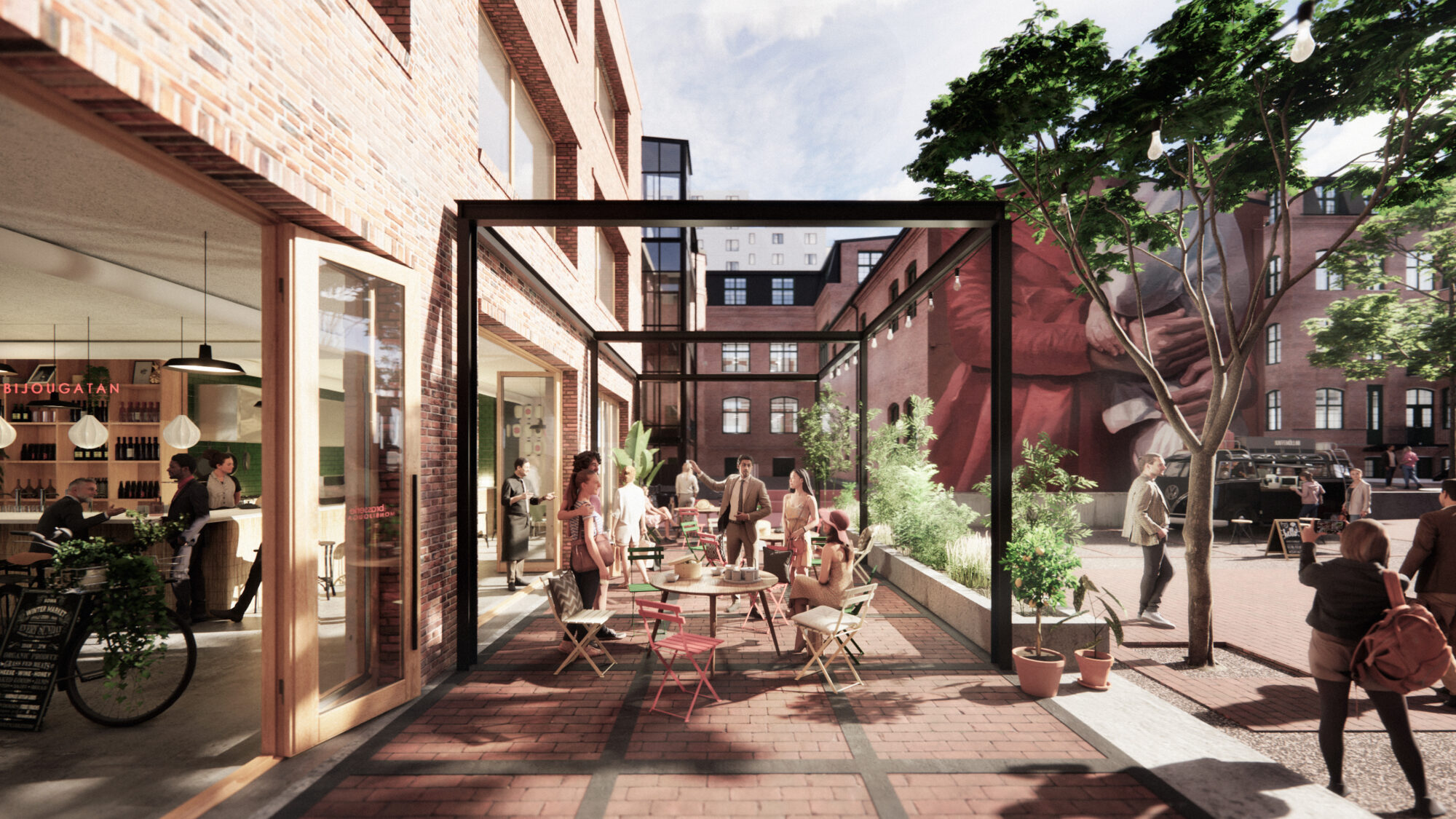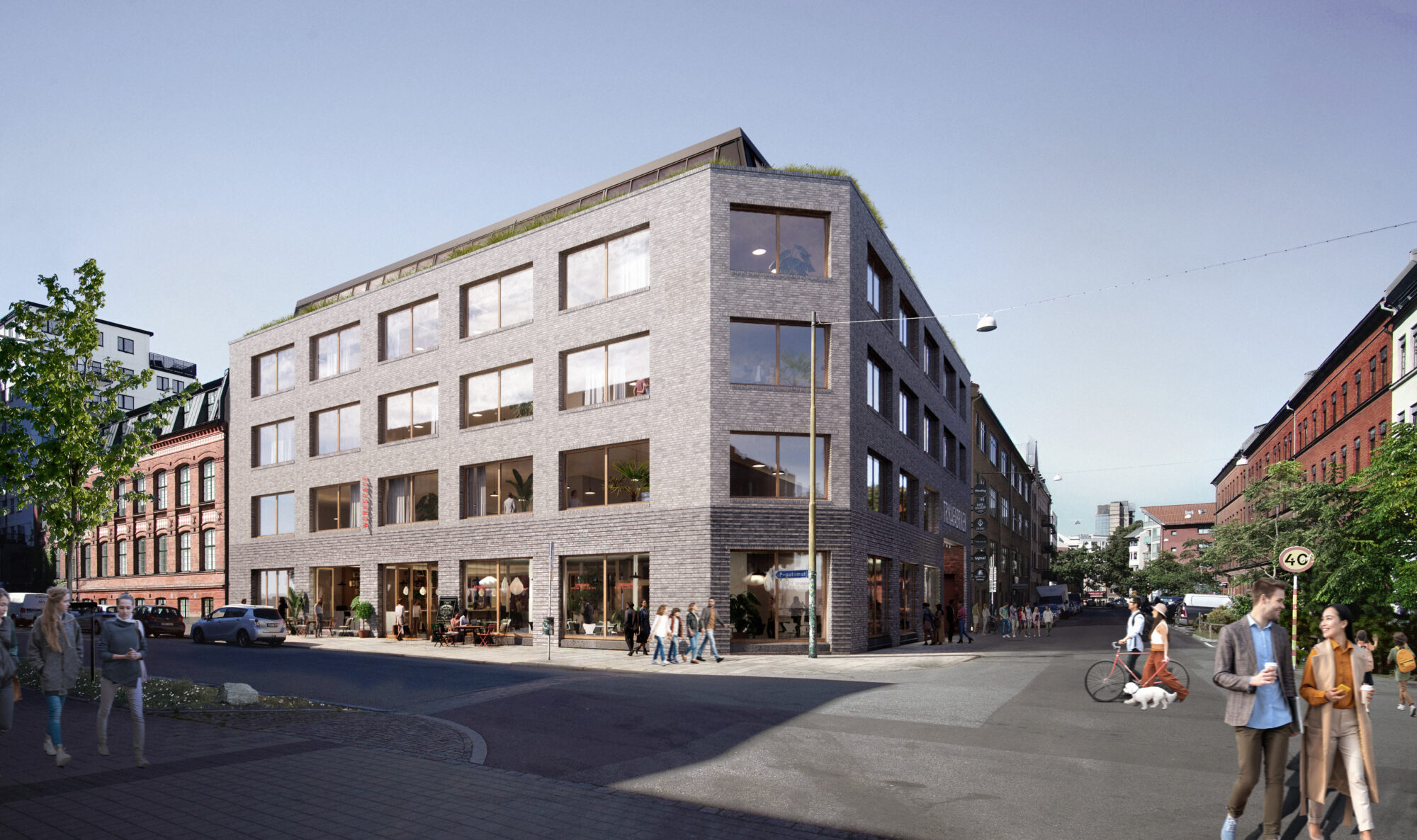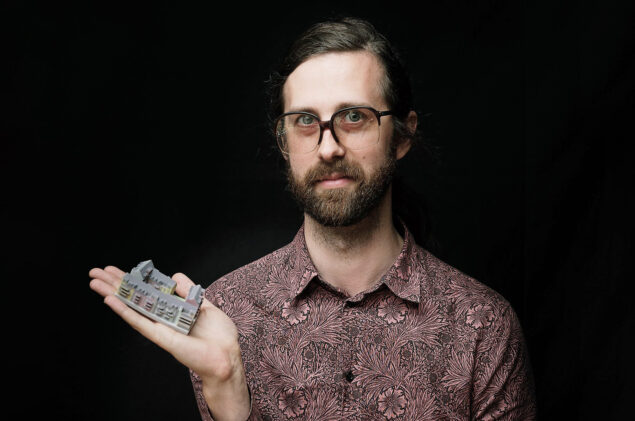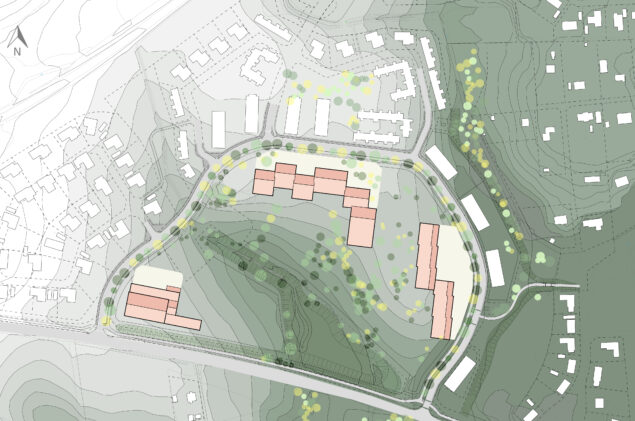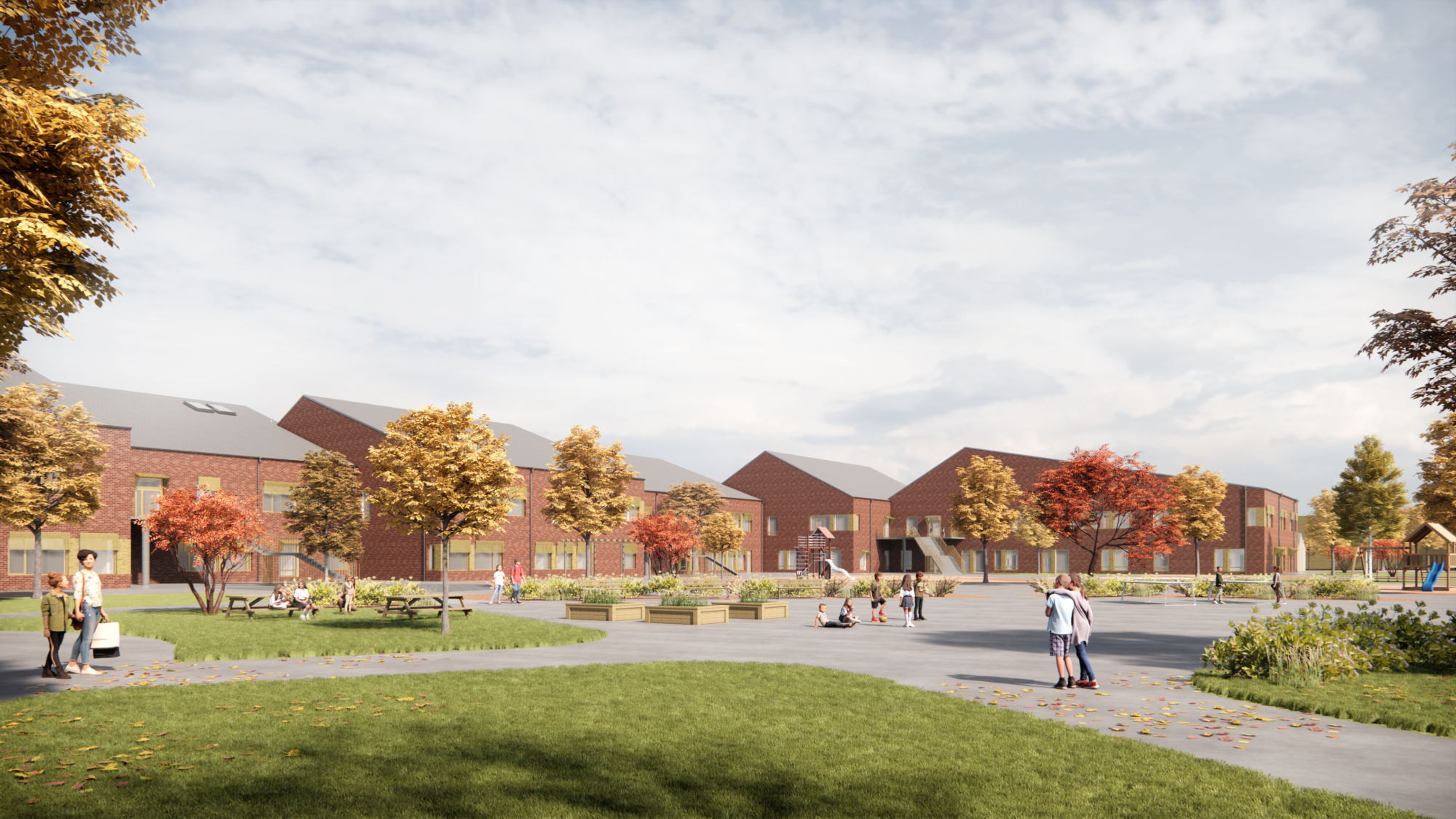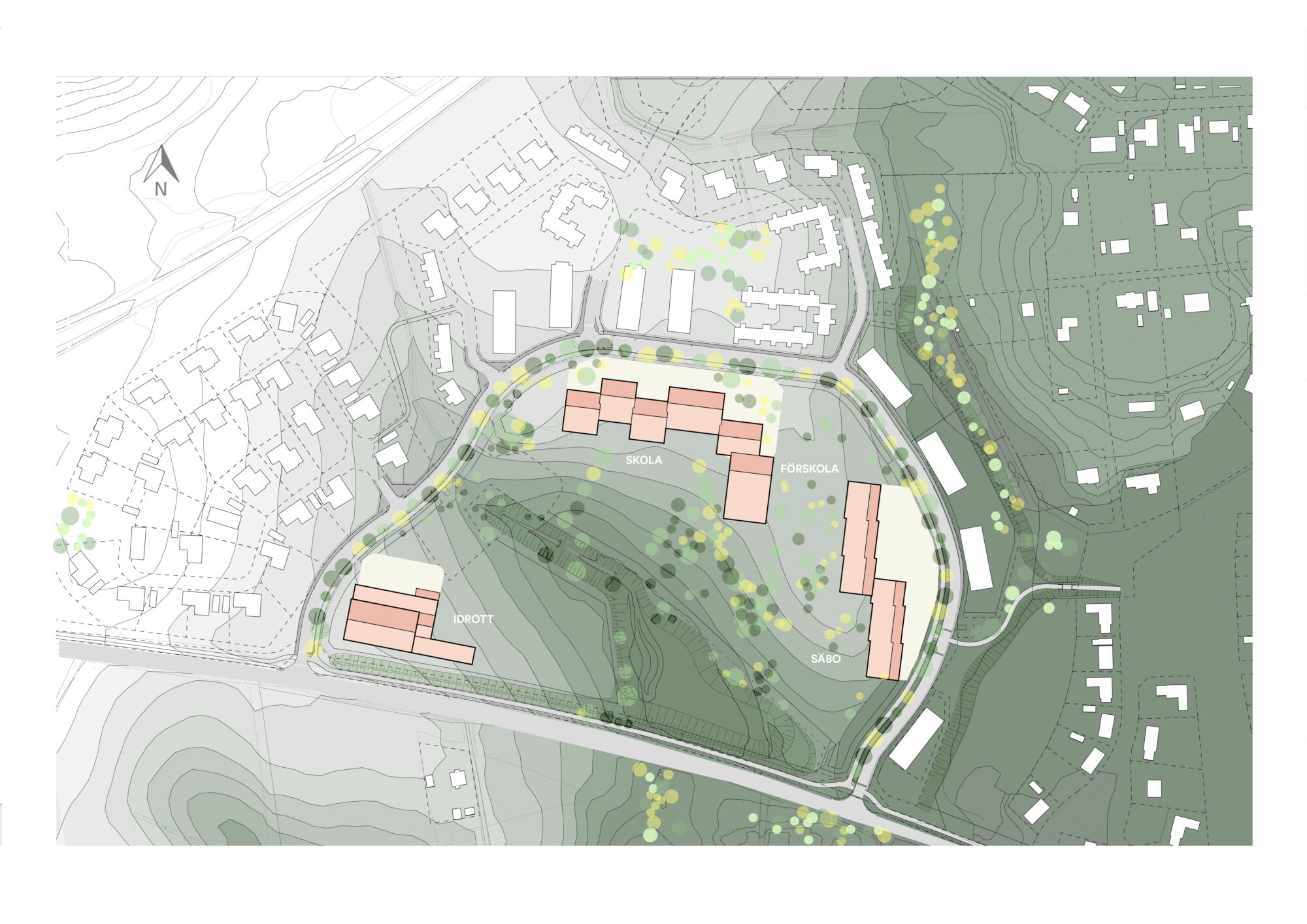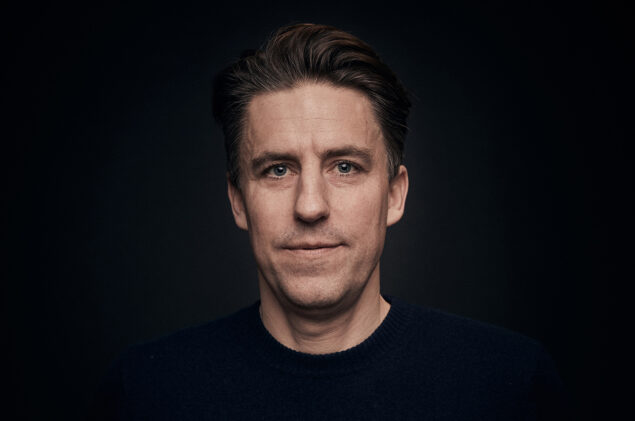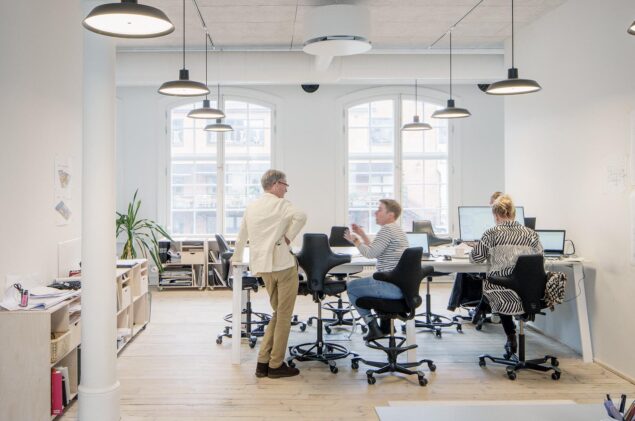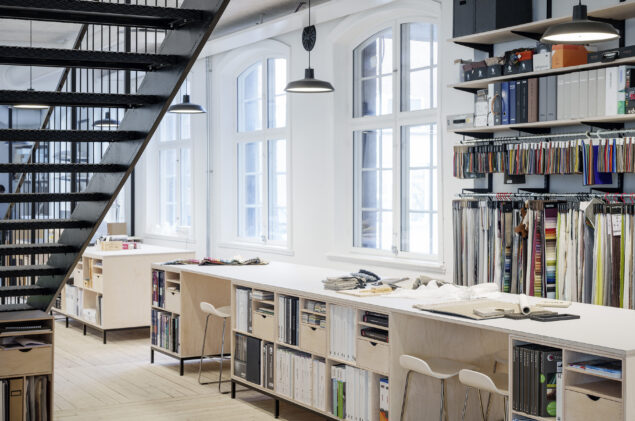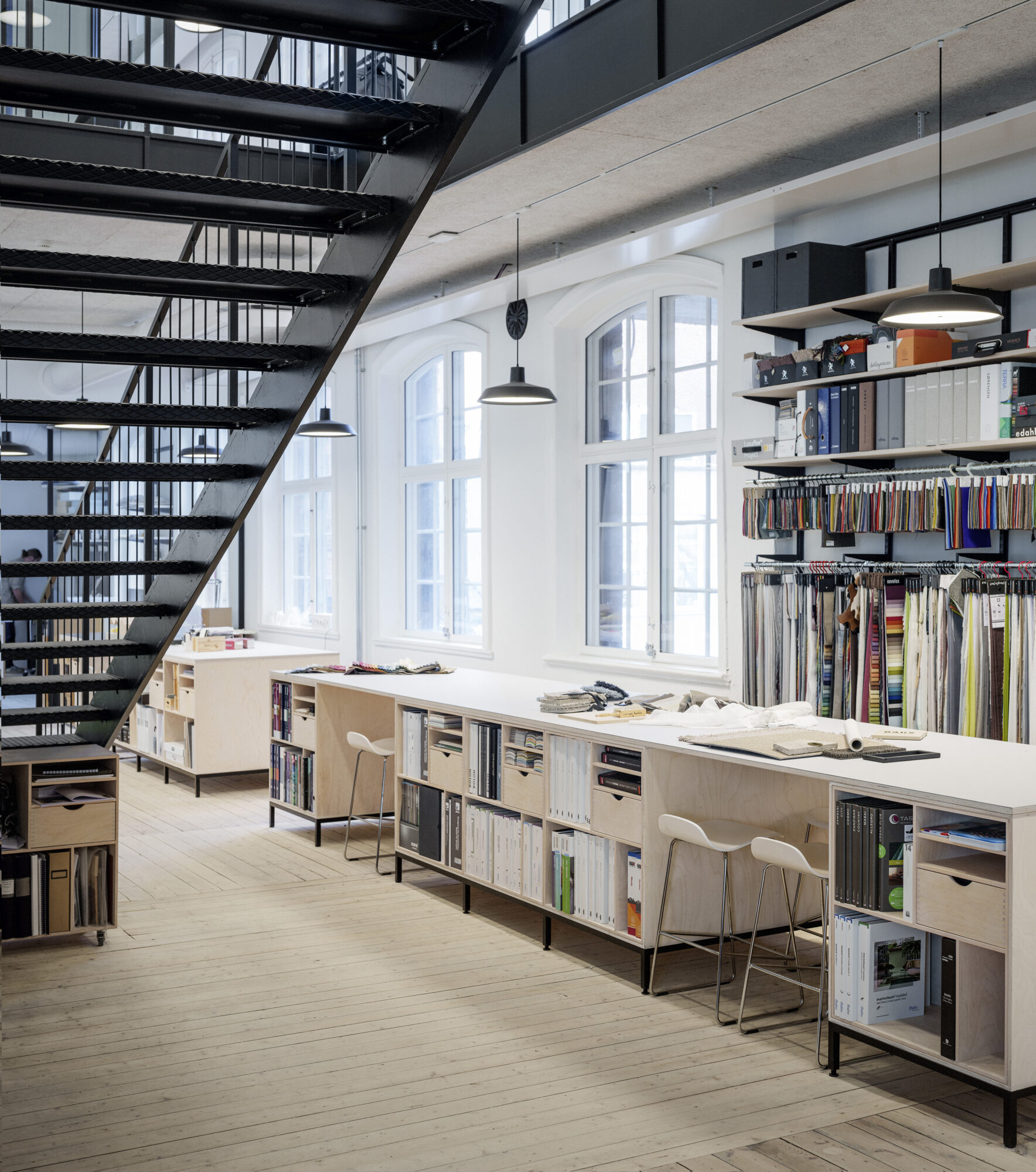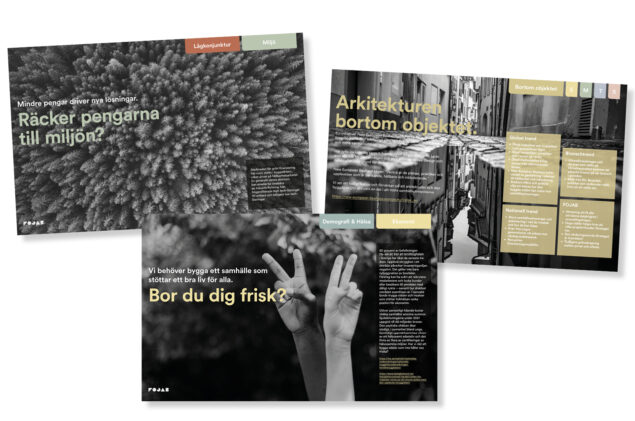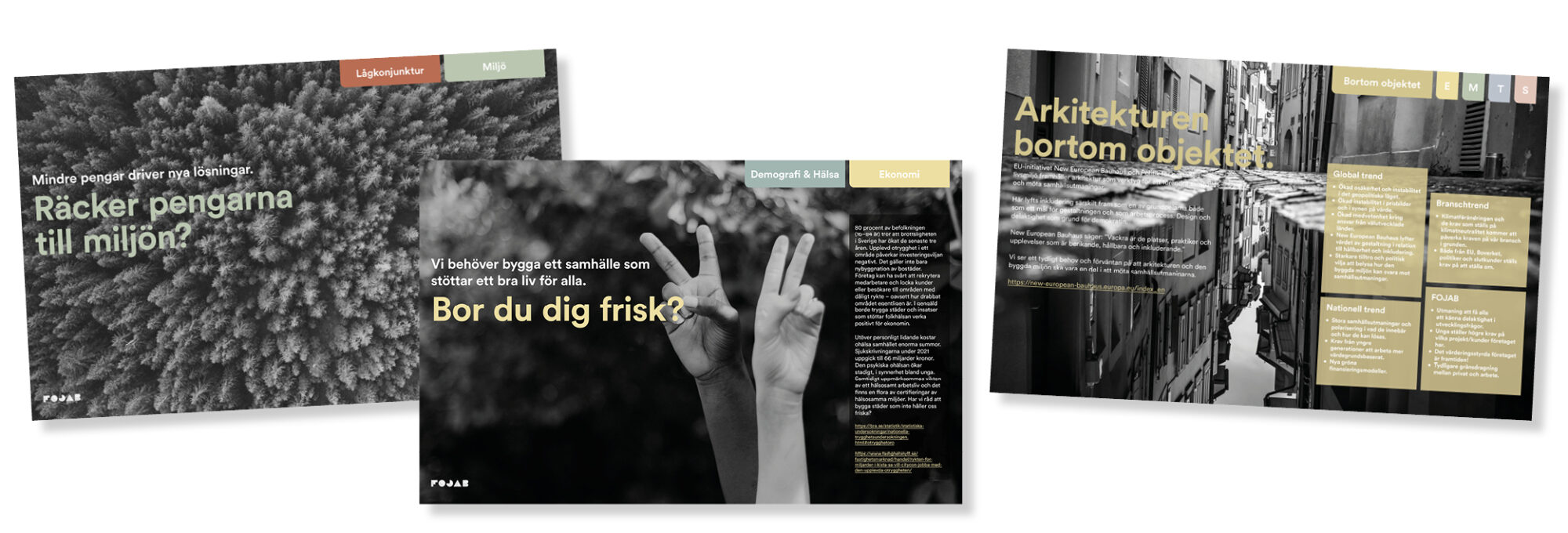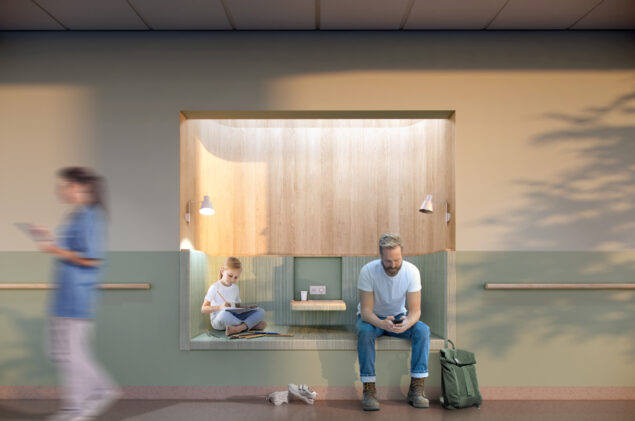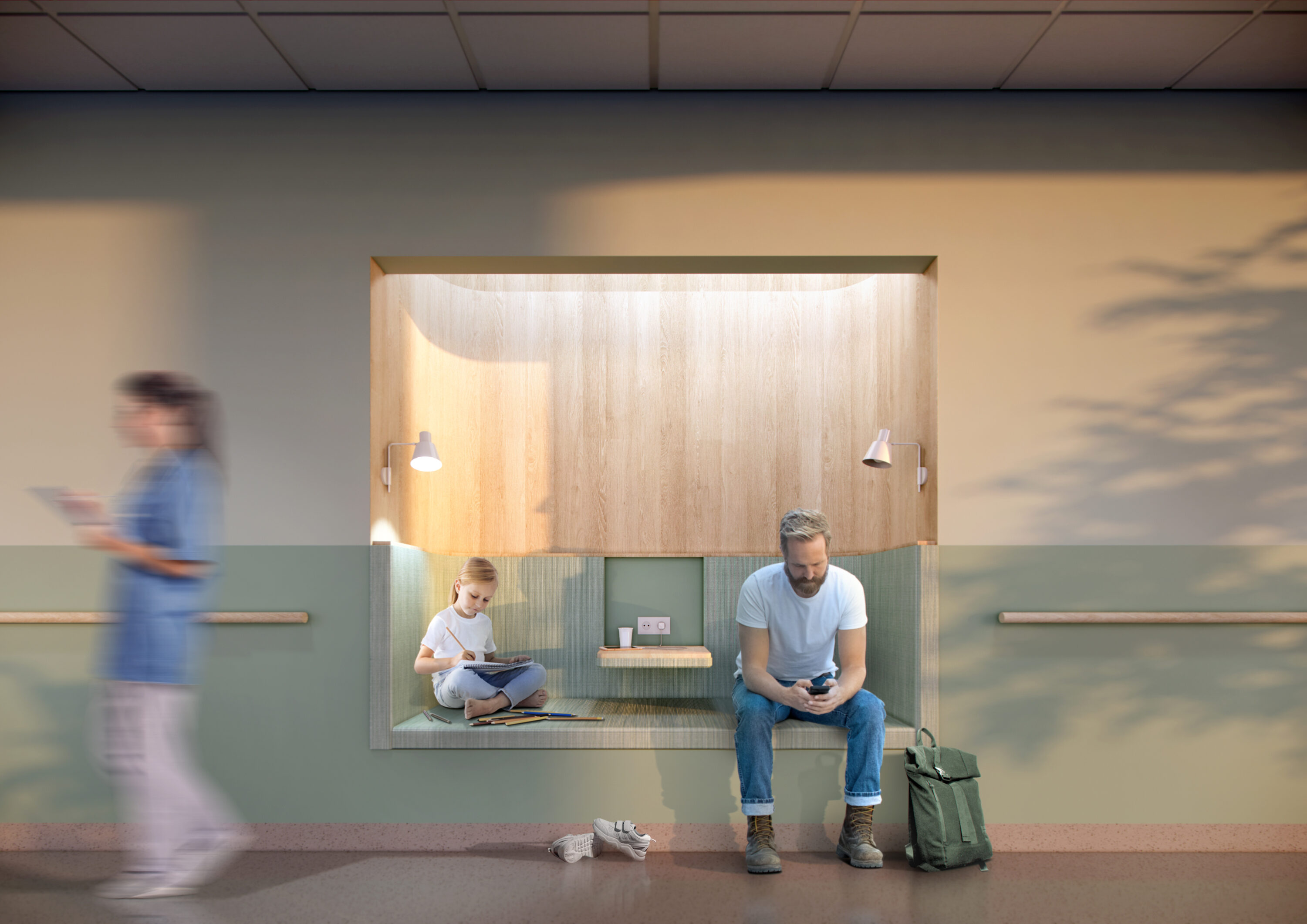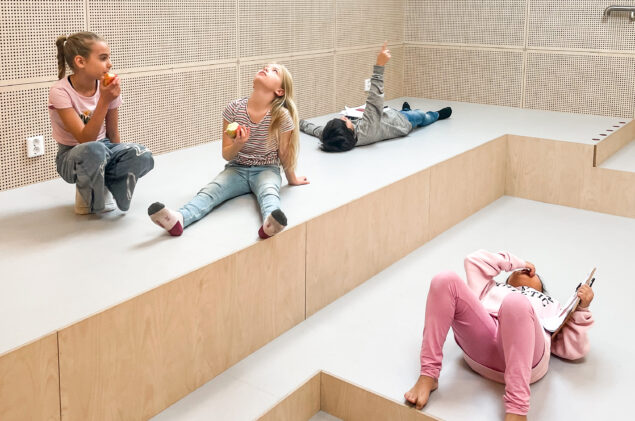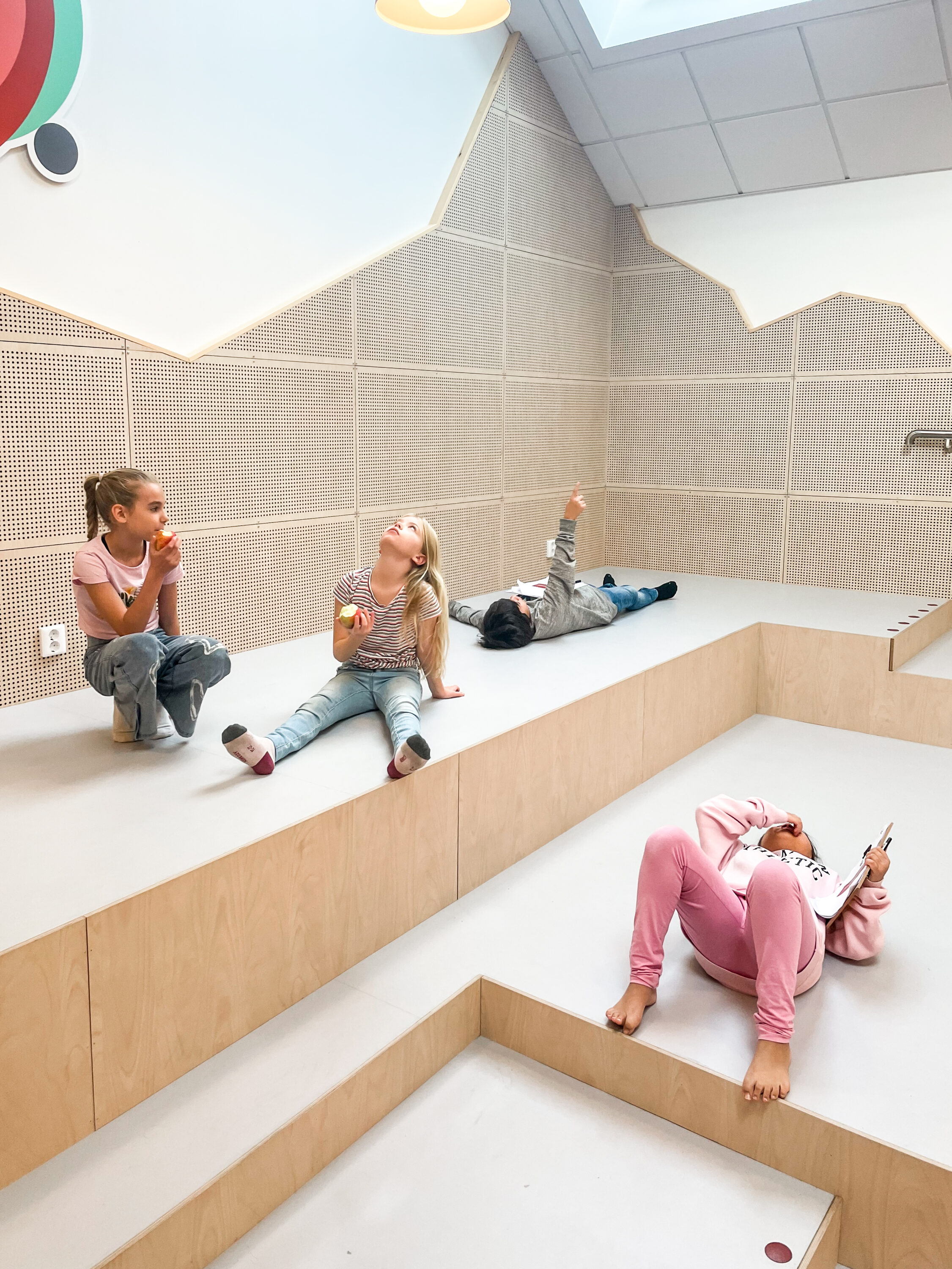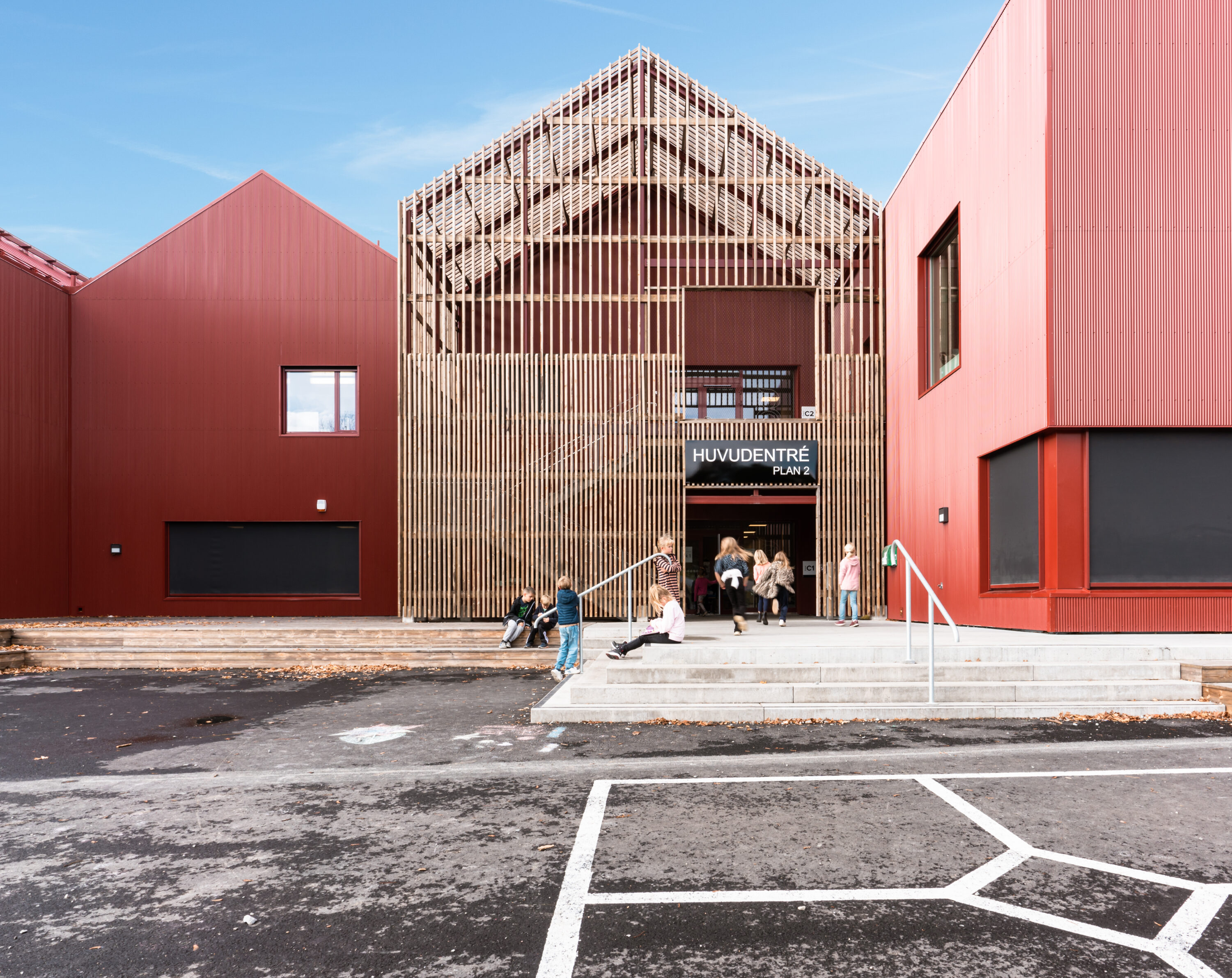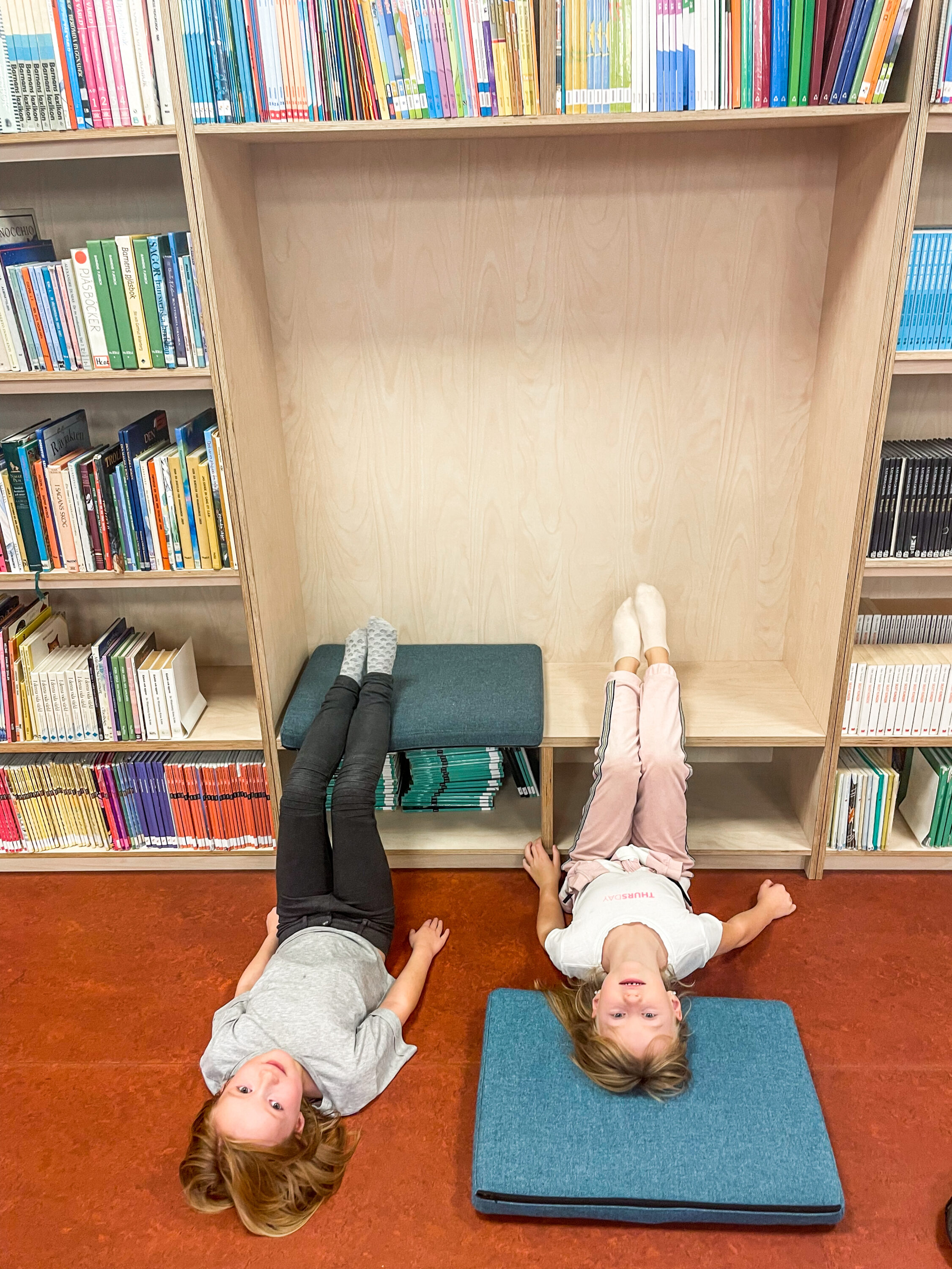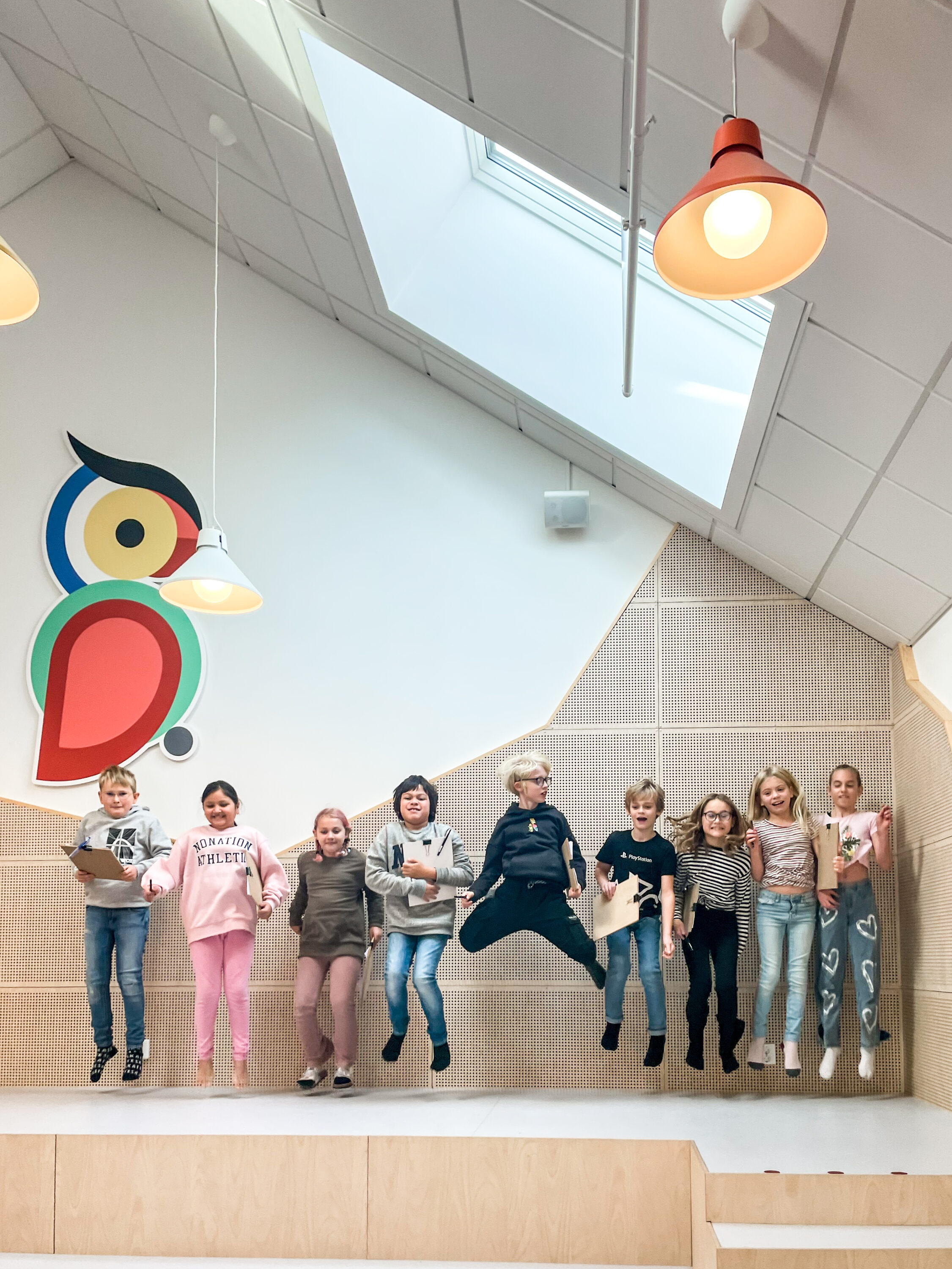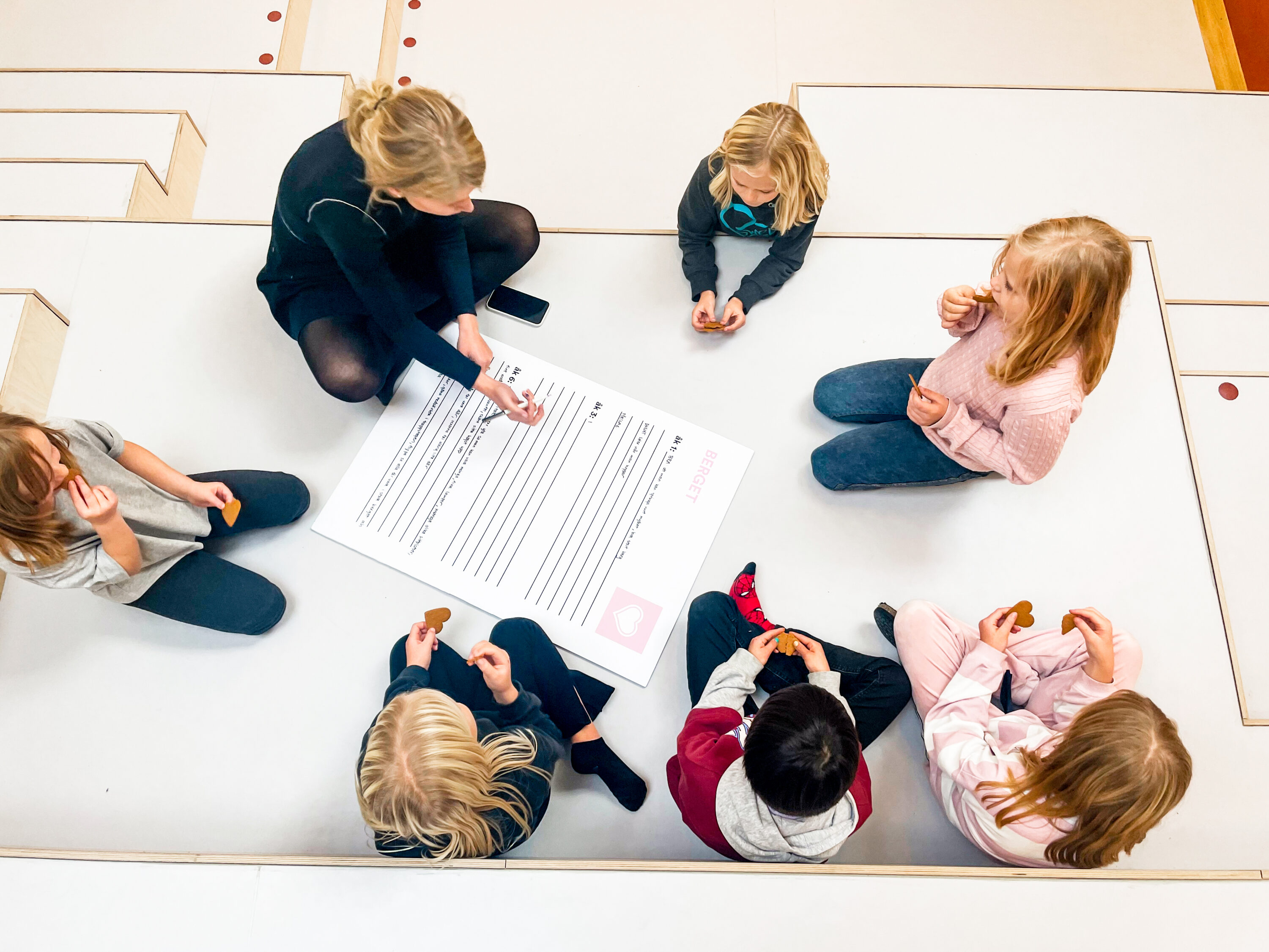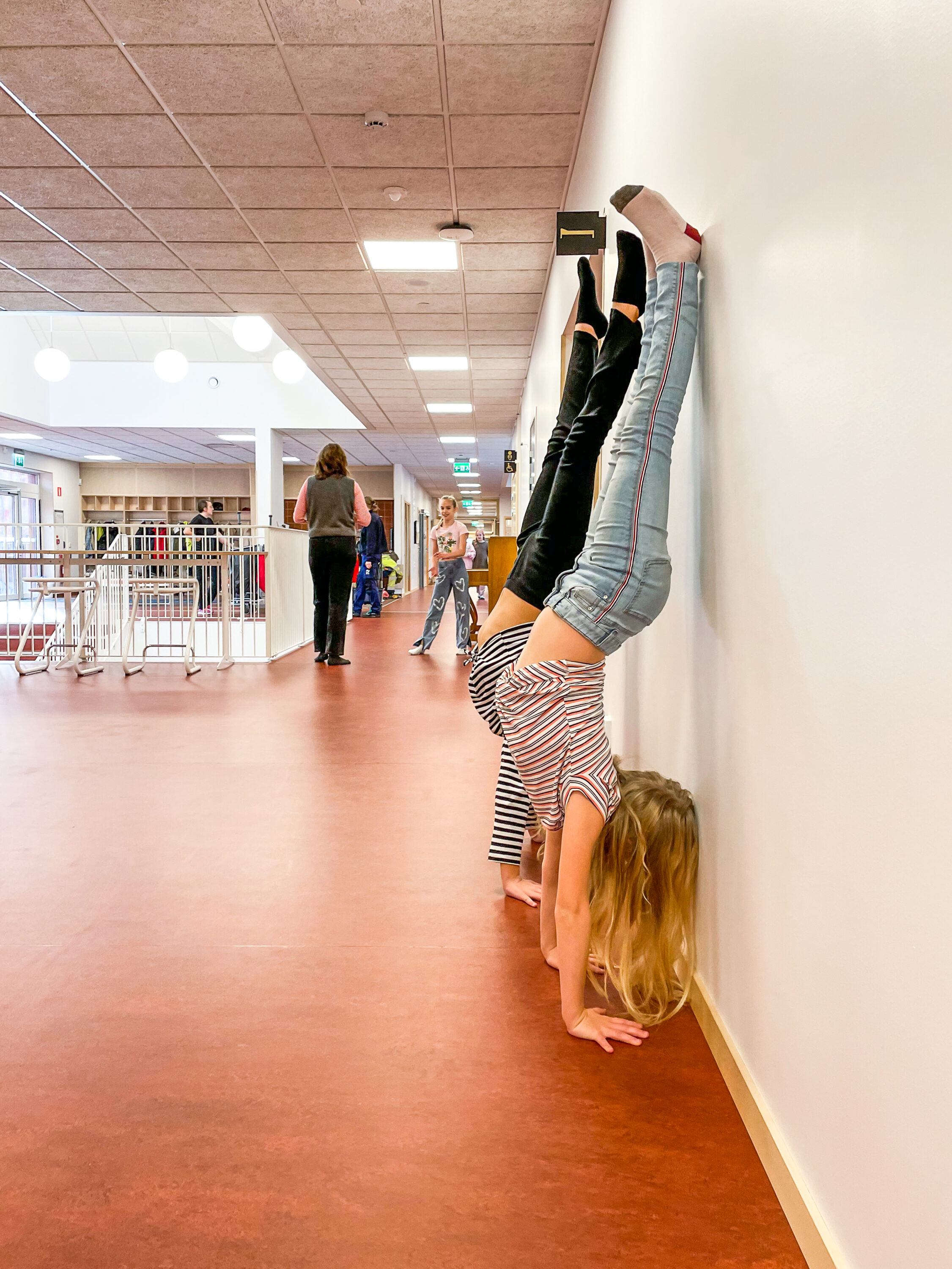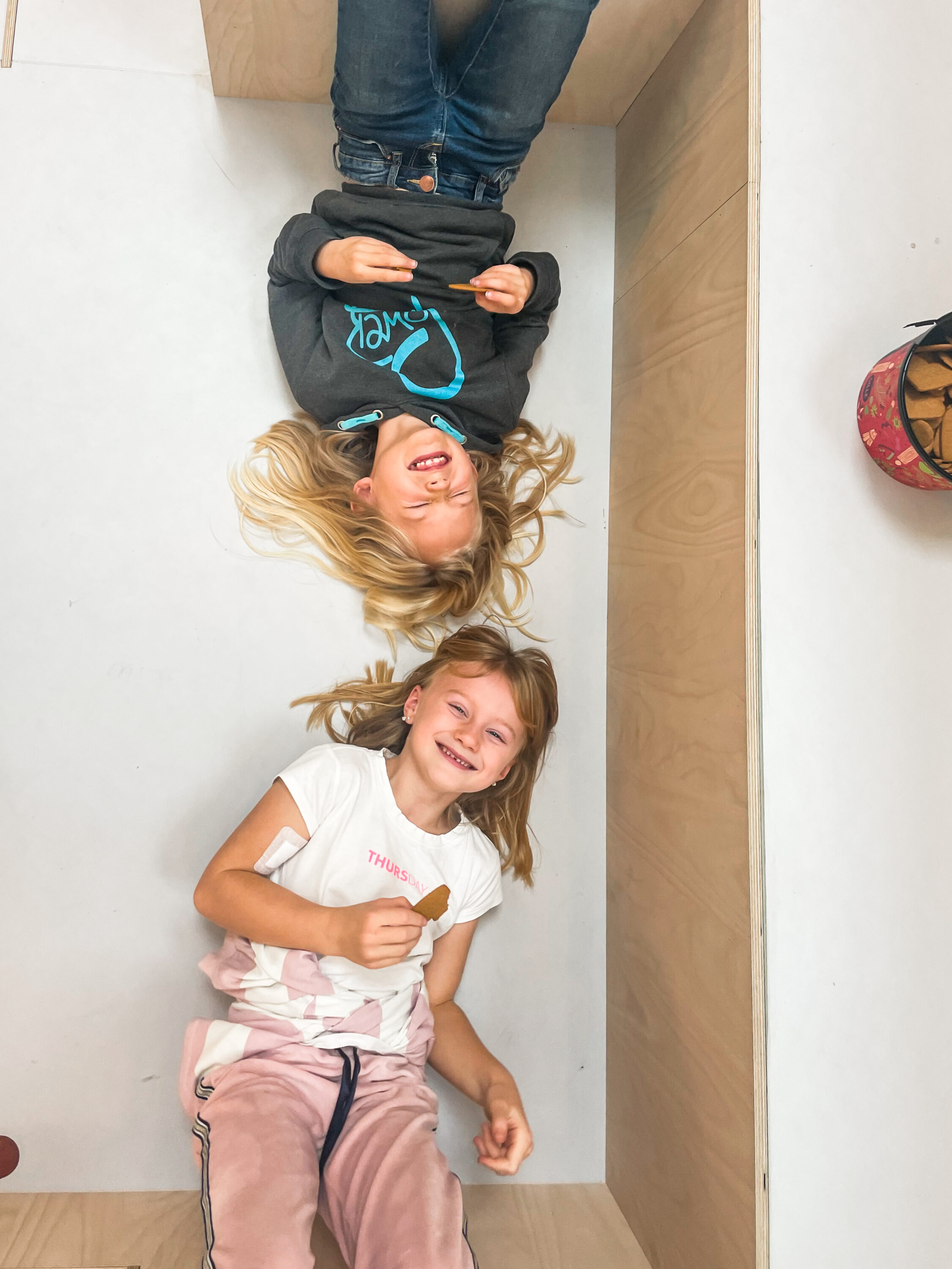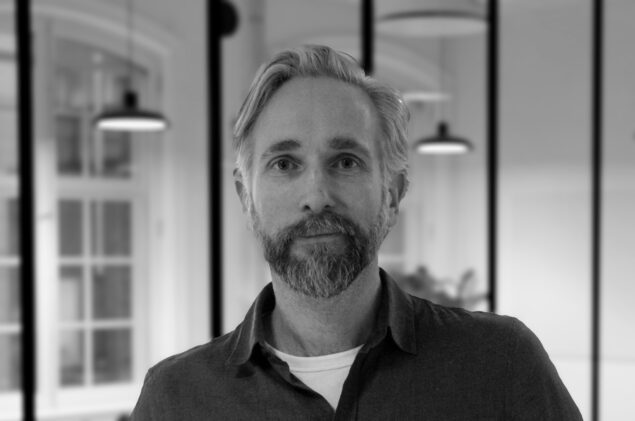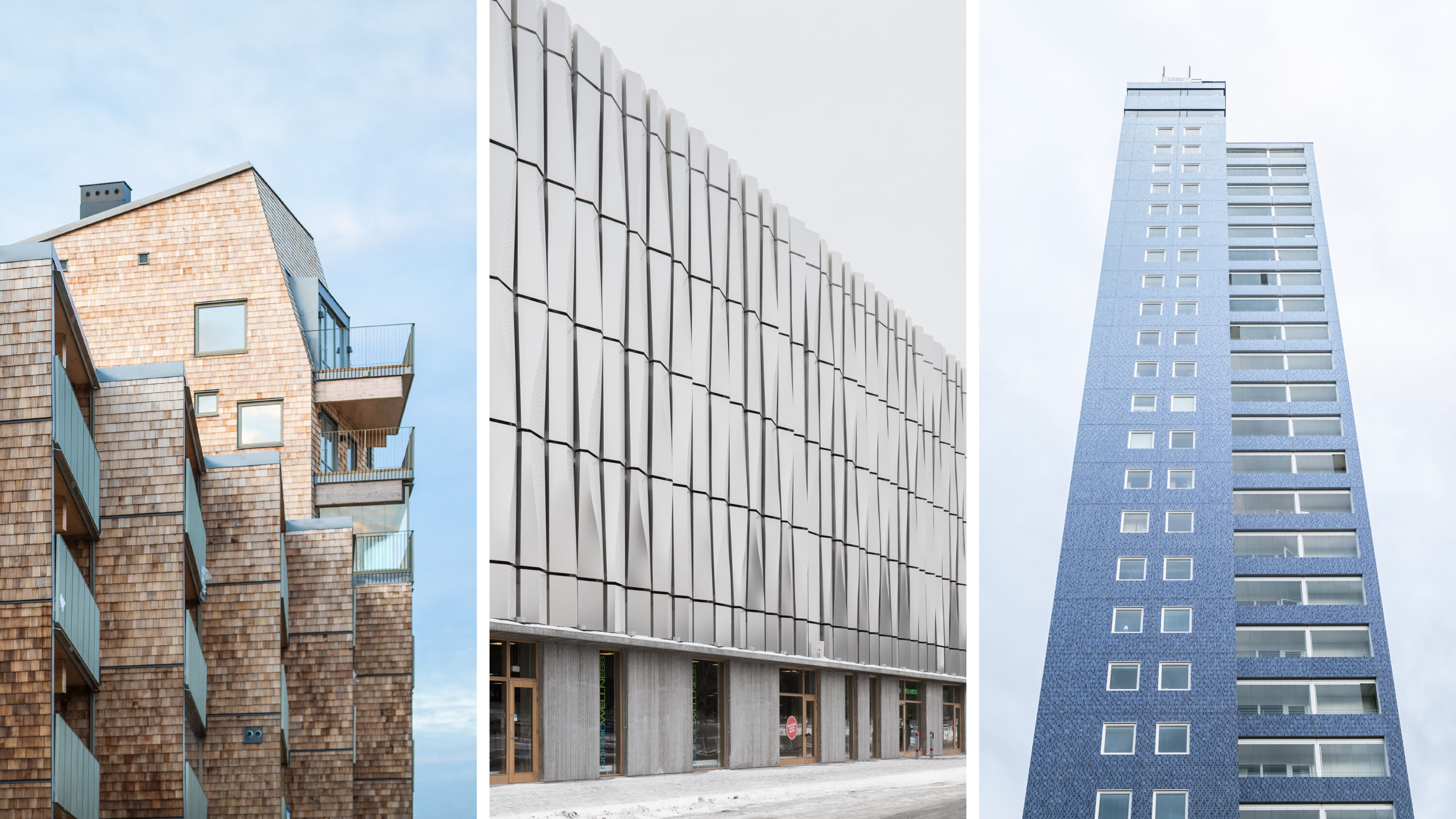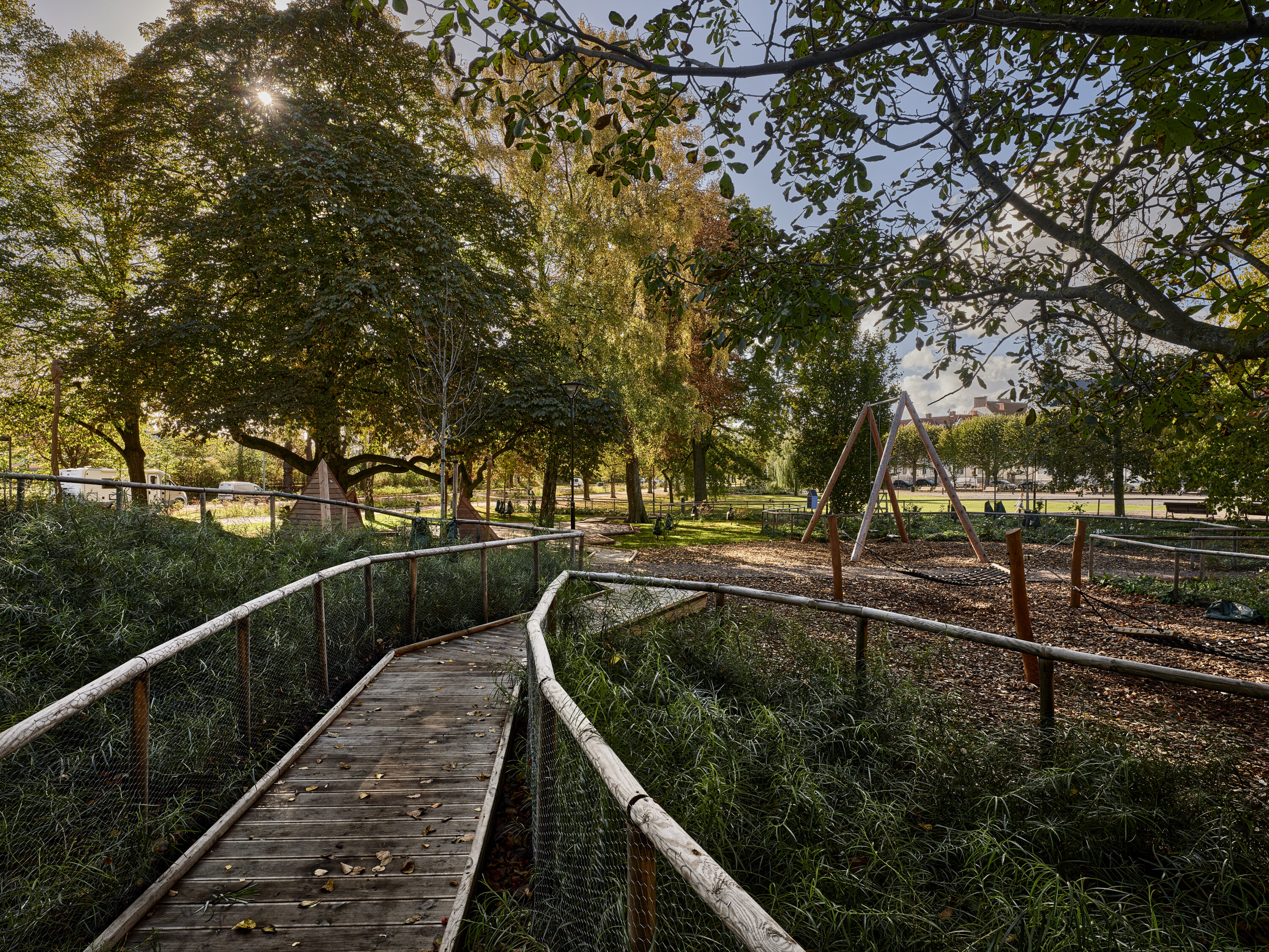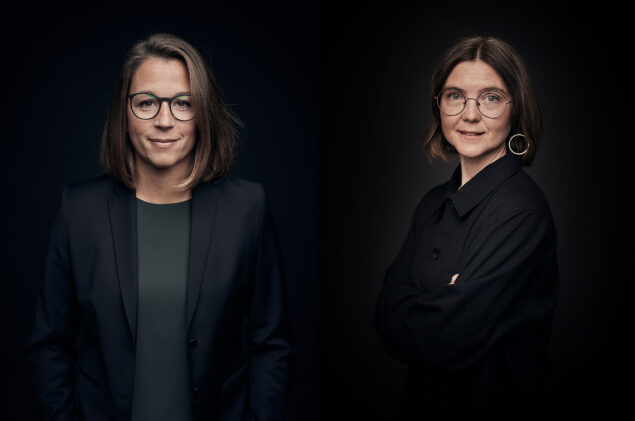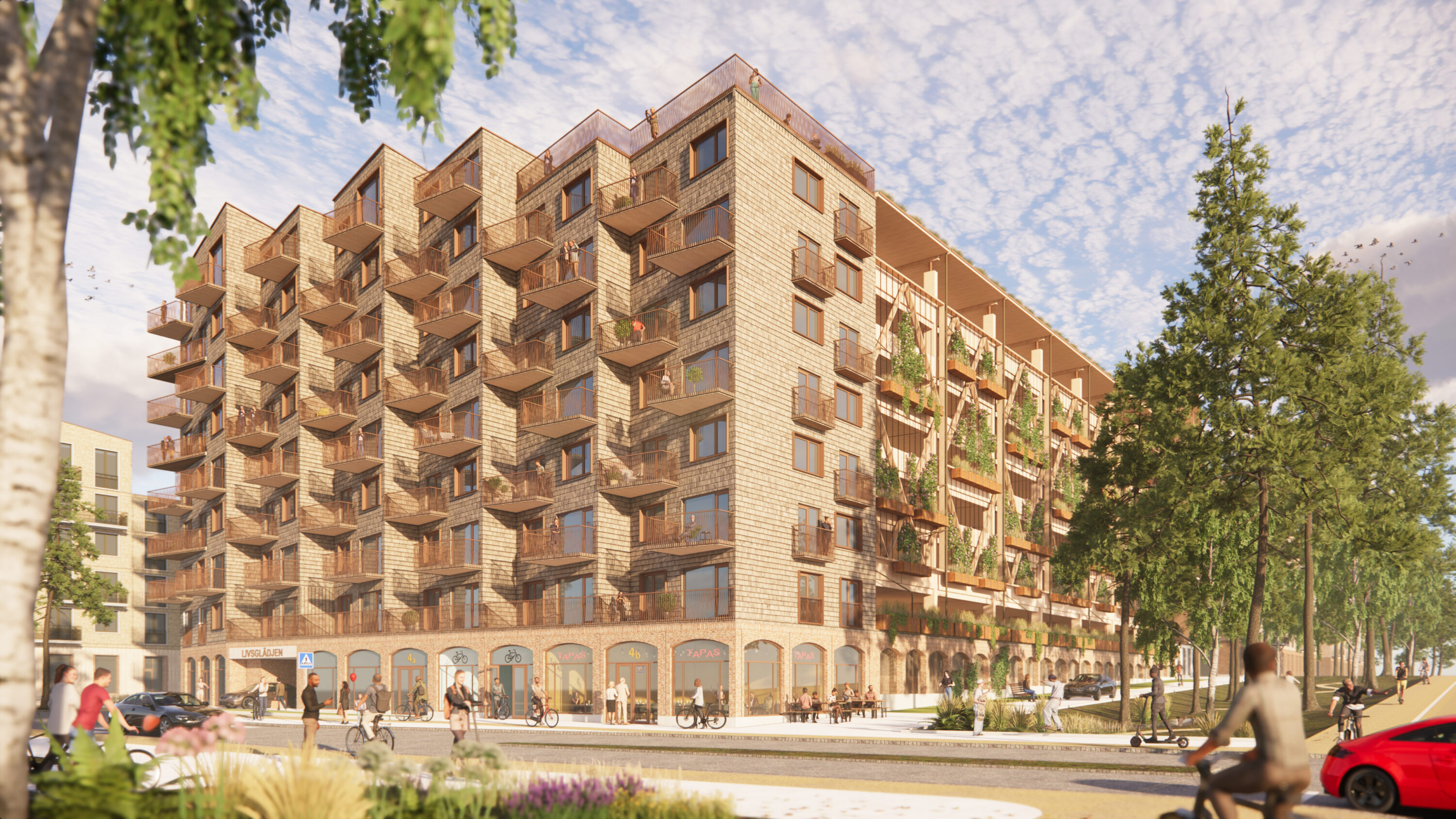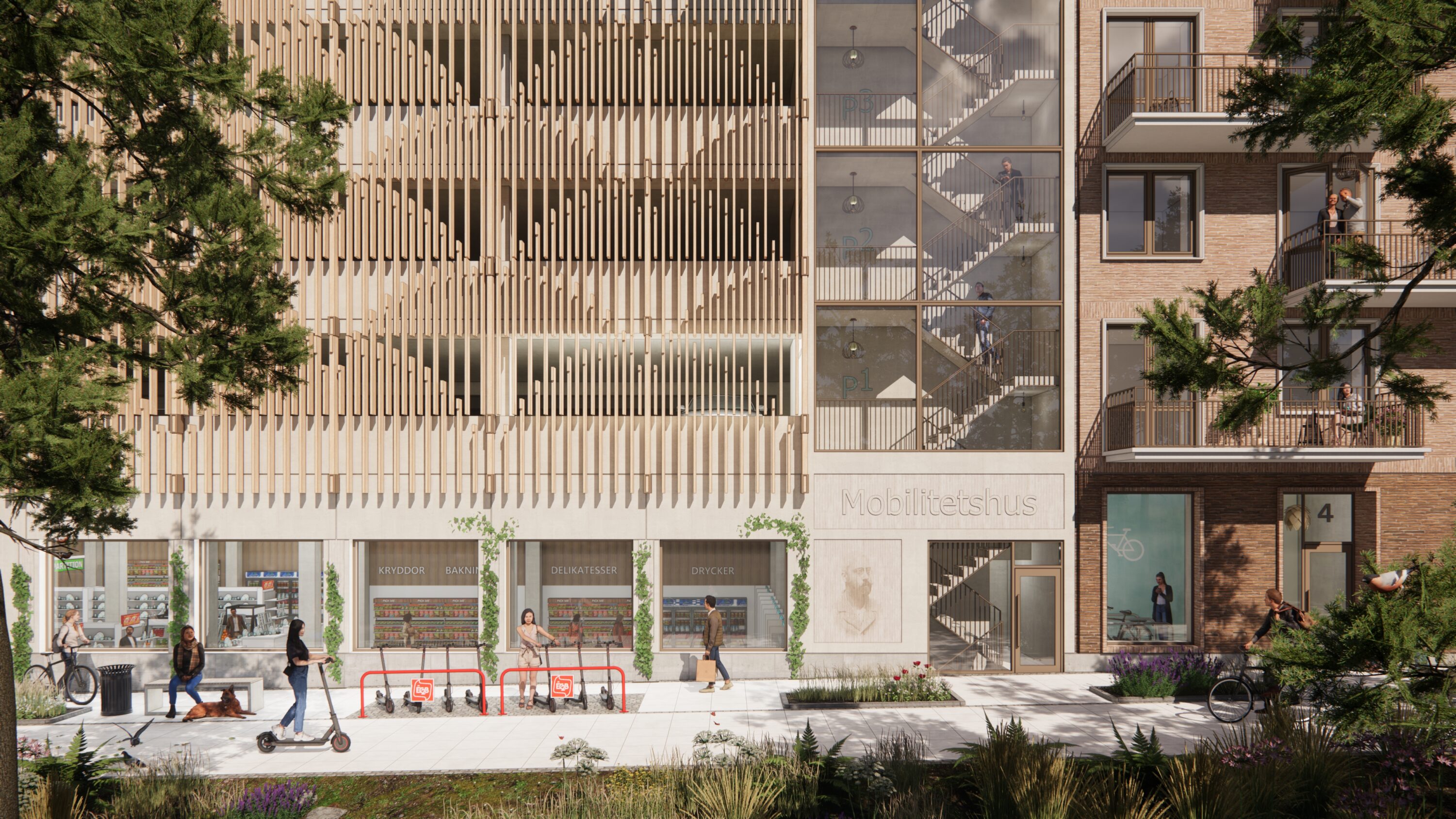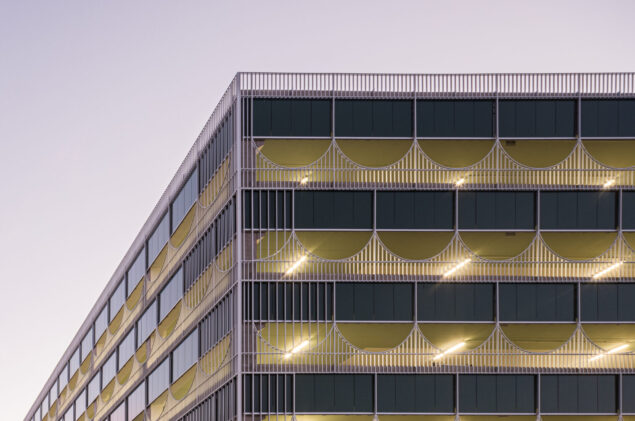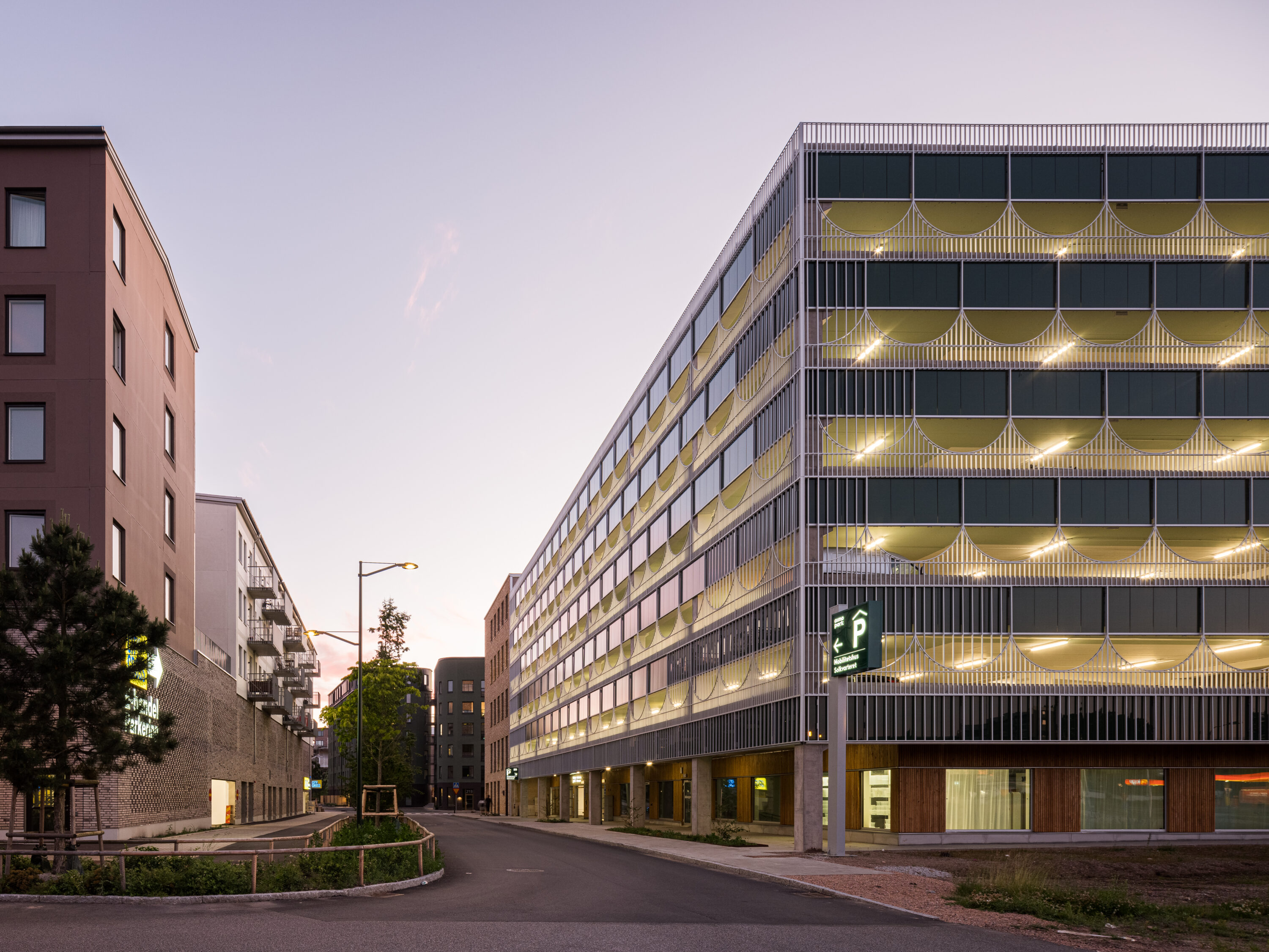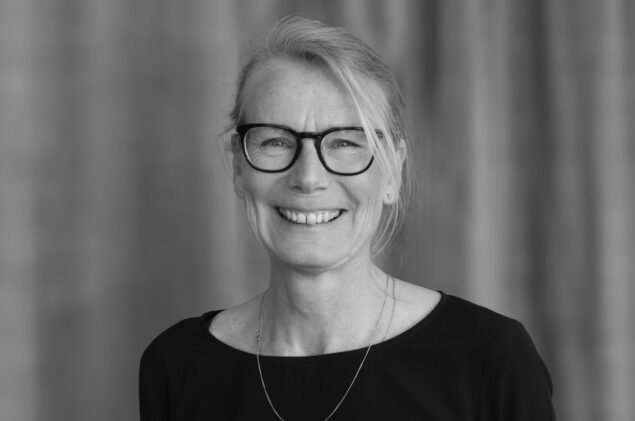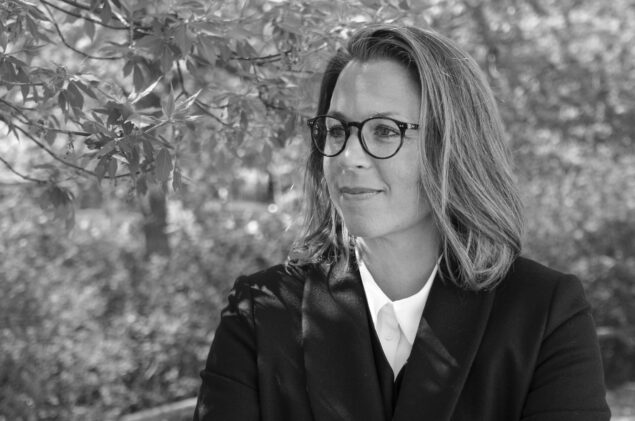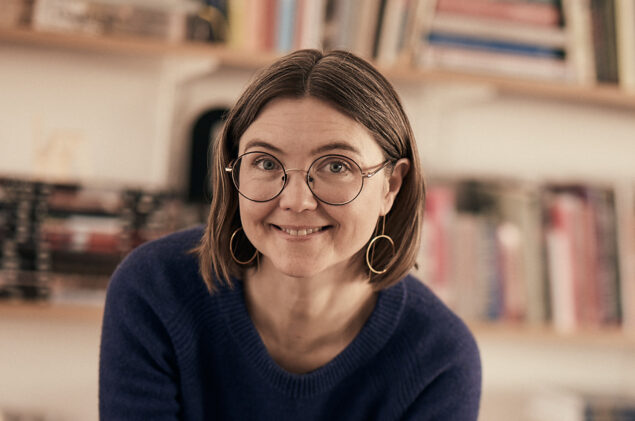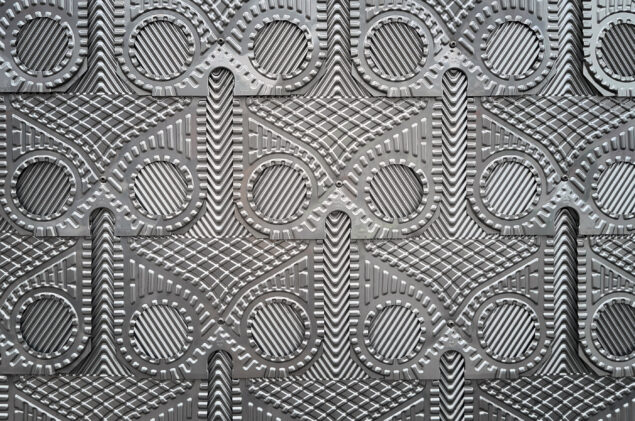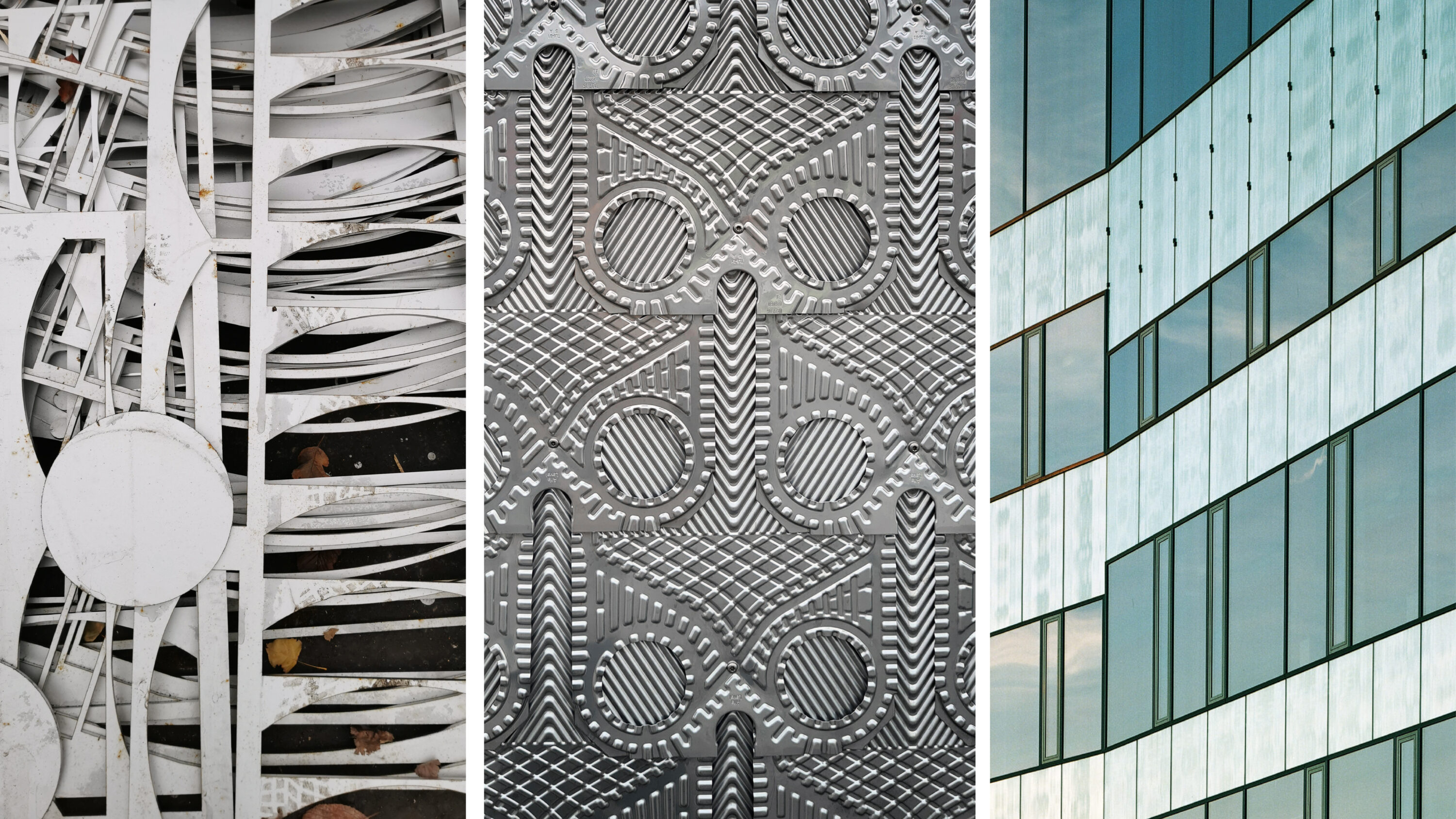2023-08-24
FOJAB behind Norrgavel's new look
After a major renovation, the doors of Norrgavel's store are now open in a listed building on Birger Jarlsgatan in Stockholm. FOJAB's architects have worked closely with Norrgavels founder and designer Nirvan Richter to develop solutions that are both contemporary and a return to the original expression.
The 1911 building was designed by architect Carl Bergsten, who is also responsible for the Liljevalch Art Gallery. The design language is heavily national romantic but at the same time with a certain playfulness and with several unconventional approaches. The building is considered particularly valuable and worth preserving.
The building was built as a theater but with the idea that it could be converted into a department store. In 1938 the building became a cinema and in 1985 the rock club Gino moved in. For a few years in the 1990s, an office was housed here before Norrgavel took over the premises twenty-five years ago. Numerous changes have been made both internally and externally over the years, but it is only now that the building is really being adapted for retail operations.
FOJAB has played a central role in the transformation, with assignments from two directions. As an architect for the property owner Humlegården, it has monitored the property's values in a long-term perspective. As an architect for Norrgavel, we have, based on Nirvan Richter's visions, developed proposals on how the store can be used more efficiently and with its interior expression reflect Norrgavel's brand.
- The collaboration with FOJAB started with our store in Malmö. It has been extremely liberating to have a partner to discuss ideas with," says Nirvan Richter, who is also an architect. "FOJAB's architects were much bolder than me and proposed solutions that I would never have dared to do myself, both in Malmö and Stockholm. It has been very successful!
Inside, space has been freed up, accessibility has been improved and lines have been cleaned up. A new floor opening in the atrium and a former outdoor staircase have now become part of the shop floor. The space feels contemporary and modern but in harmony with Carl Bergsten's intentions.
- Transforming older buildings is very much about understanding and being inspired by the original architect and the intention of the original work. With the cultural environment as a sounding board, we have optimized flows, tightened the material palette and created a new store experience," says Ylva Åborg, commissioned architect at FOJAB.
On the exterior, the building has been restored to its original design in terms of materials and colors in consultation with the architectural antiquarian. The facade's large windows have been restored, the entrance has been moved and decorations have been restored.
- This is a building that, since its inception, has contributed to Stockholm's street life with liveliness and human encounters. We have now reinforced that character with the large glass sections and better transparency between inside and outside. I hope that many people will want to come by and take a look, because this is more than a retail experience, it is also an architectural experience," says Robin Larsson, supervising architect at FOJAB.
2023-07-04
Möllan Voices - Empowering the Local Perspectives
FOJAB has been selected to be part of "Malmö in the Making", the City of Malmö's initiative to explore what the city's spaces, architecture and culture mean to the people of Malmö and how we can shape the city's development together.
During Malmö in the making, we want to contribute with a program point, where we together with professionals, entrepreneurs and residents of Möllan explore different perspectives on what it is that makes Möllan a good place to live and work.
FOJAB's program item MÖLLAN VOICES - EMPOWERING THE LOCAL PERSPECTIVES wants to explore how several different local perspectives can be expressed in the urban development process and what different future images can look like.
Why do we do it?
The purpose of our program item MÖLLAN VOICES - EMPOWERING THE LOCAL PERSPECTIVES is to:
- Explore why Möllan residents and workers choose to be there, how they use the public space in their neighborhood, and what their dreams and visions are for the future of Möllan.
- Explore alternative ways to empower local residents and workers to influence urban development in their area.
- Create a better basis for architects to fulfill their task of taking in and understanding an entire neighborhood and the different perspectives that exist there, in order to sustainably plan for the future of Möllan and Malmö.
- Involve and work across disciplines, showing and strengthening the diversity and differences of Malmö.
- Create a Möllan guide, for Möllan today and for Möllan's future, by and for Möllan residents, workers and entrepreneurs at Möllan.
What do we want to do?
The first part of our program is a survey of the local! Using a questionnaire, we will collect information, thoughts and ideas from residents, active visitors and business owners in Möllan. Then creators (image makers, photographers, musicians, etc.) will interpret and interpret the answers. Our idea is for creative people to create their own works and future images of Möllan. Each creator will exhibit their work in FOJAB's premises for one week each in September. The public will also be invited to view the images of the future.
The final part of our program will be an Architecture Salon on 27 September on the theme of culture, knowledge and urban development. Then we will discuss the results and show all future images. The panel includes Anna Jonsson, associate professor and organization researcher at the Department of Business Administration at Lund University and SIR, Stockholm School of Economics Institute for Research, at the Stockholm School of Economics. Anna has also written a opinion piece on Malmö in the Making where she points out how important it is to consider how the knowledge and lessons of a broader dialogue are utilized in the project.
More about Malmö in the Making at malmo.se
Contact persons:
Magdalena Hedman
Nellie Stenvall
2023-06-21
FOJAB's architecture educator raises children's voices
Three years ago, the UN Convention on the Rights of the Child became Swedish law. In her role as an architect and architecture educator at FOJAB, Kristina Kember puts words into action and empowers children to influence their local environment:
- This involves both increase interest in architecture among children and young people and give them tools to use their influence.
What is an architecture educator?
- An architectural educator is an architect with knowledge of working with children and young people, who can act as a link between schools and preschools and those who plan and design. There are many different ways to work with children's dialogue, such as analysis and reflection, creativity, exploration with all their senses and democratic processes. The aim is to give children the tools to express their opinions and to participate in influencing their living environment.
Why are architectural educators needed?
- Since the UN Convention on the Rights of the Child became Swedish law in 2020, children's legal influence over the local environment has been strengthened, but for the child's perspective to really have an impact, we adults need to prioritize and work actively with these issues. In dialogue work, we need to find a common language so that adults and children together can talk about and investigate how they experience a room or a place in the city, for example.
- At FOJAB, we have developed methods for involving users early in the process and have good experience of dialoguing with schools. Working directly with children and young people is important but also very fun and we learn a lot in the process.
Why are children's perspectives important when planning and building?
- Of course, it is particularly important to take care of a group that cannot make its voice heard. When cities are densified, green spaces and public places are scarce in the development process. Children who may not have much space at home are particularly affected by the lack of social spaces. We must also be vigilant in ensuring that school and preschool playgrounds are not reduced in size and think about how to create environments that are safe, that inspire joy of movement and provide space to play freely.
What exactly do you do as an architectural educator?
- One example of my role as an architectural educator was the new school in Mörrum, which FOJAB designed. A few months after the opening, we met with the students to hear their thoughts on their new environment. We wanted to get their views on what works and what doesn't, whether they had suggestions for improvements, and how they experience and use different parts of their school. For two days we met with students from grades 1, 3 and 6. We did various exercises and talked about everything from form and function, light and acoustics to choice of materials, experience and feeling.
What did you learn?
- We encountered great enthusiasm from the children to share their different experiences and were really impressed by how insightfully they analyzed their surroundings. The direct feedback from the children will help us to ensure what we have done right, but also to understand what we can do differently - things we would not have thought of without the help of the pupils. Another goal was to increase children's curiosity about architecture and create positive feelings about how to use their influence.
What else is in the pipeline?
- In addition to my involvement in the Swedish Architects' Council for Architecture and Children, we at FOJAB have just started a collaboration with Möllevångsskolan, one of our closest neighbors here at the Malmö office. In the fall, we will meet high school students, where architects and students will guide each other and where we will work with different places in our common environment. The hope is that the students' ideas will lead to suggestions for improvement and actual changes.
2023-06-19
Meet FOJAB in Almedalen
See you in Almedalen? This year we are particularly keen to talk about this:
👉AI and the potential for the built environment. Can we use the power of digital development to strengthen soft values and human needs?
👉What stands in the way of sustainability? What new partnerships can break new ground?
👉How can yesterday's buildings meet today's and tomorrow's needs? Where do we draw inspiration for a successful transformation - in the US, Asia or Europe?
This year FOJAB is represented in Almedalen by ten architects from our offices in Malmö, Stockholm and Gothenburg. Feel free to book us for talks and panels, invite us to events and mingle or just grab us on the street for a chat. Our contact details and specialties:
Kjell Adamsson, Deputy CEO and Head of Business Development. Architect with a focus on early stages, strong ideas and development of new projects in close dialog with our clients. Runs complex projects with a particular focus on legal buildings. Happy to talk about how we as architects can help develop and transform existing properties in a sustainable way in a time of both climate and economic challenges.
E-mail: kjell.adamsson@fojab.se
Mobile: +46 708 - 83 80 82
Karin Fagerberg, Head of Operations. Architect specializing in urban planning processes and design of major urban development areas. Always looking for learning collaborations and developing future urban environments with unique qualities paired with feasibility.
E-mail: karin.fagerberg@fojab.se
Mobile: +46 705 - 27 46 15
Magdalena Hedman, marketing manager, responsible for the urban development competence area. Curious about the world, innovation, urban development, research and collaborations that lead to sustainable urban development. Likes to talk about trends in the world around us and the social, ecological and climatic benefits of urban planning.
E-mail: magdalena.hedman@fojab.se
Mobile: +46 708 - 47 05 50
Petra Jenning, innovation manager for FOJAB's research and development initiatives. Theme leader for the strategic innovation program Smart Built Environment, sits on the sustainability council of Svensk Byggplåt and guest blogs for Sweden's Architects. Likes to talk about the future, innovation power, climate calculation, reuse and digitization.
E-mail: petra.jenning@fojab.se
Mobile phone: +46 722 – 36 12 44
Fredrik Kjellgren, office manager for FOJAB in Gothenburg. Always looking for interesting collaborations and to develop projects, preferably with a focus on urban development, transformation and sustainability.
E-mail: fredrik.kjellgren@fojab.se
Mobile: +46 707 - 90 50 88
Carl Kylberg, office manager Malmö. Has worked a lot with offices and relocations and likes to discuss the workplace of the future.
E-mail: carl.kylberg@fojab.se
Mobile: +46 709 - 90 30 10
Jens Larsson, market area manager Stockholm and responsible for the competence area real estate development. An architect with a focus on early stages and value creation who is passionate about the possibilities of architecture and the needs and challenges of the outside world and how we can find the projects of the future together.
E-mail: jens.larsson@fojab.se
Mobile phone: +46 761 – 65 61 63
Magnus Lundström, responsible for the competence area urban development. Focuses on urban design and early stages and is passionate about creating sustainable urban environments with high residential values. Likes to talk about how we can achieve housing policy goals even in a declining economy through an increased focus on feasibility in urban development - without compromising on urban quality.
E-mail: magnus.lundstrom@fojab.se
Mobile: +46 727 - 17 31 12
Johanna Raflund Tobisson, responsible for the competence area healthcare. Driven by complexity, connections, flows, security thinking and robust purposeful beautiful architecture. Want to get to know those who have thoughts, ideas, projects or input on how to meet the major challenge of elderly care with high needs and staff shortages and on developments in care and health.
E-mail: johanna.tobisson@fojab.se
Mobile: +46 724 - 02 26 35
Ylva Åborg, head of the Stockholm office and responsible for the transformation competence area. Architect with a focus on sustainability and process management. Member of the Swedish Architects' Board and leads Klimatarena Stockholm's working group for climate-smart materials and is. Likes to talk about climate-smart choices, circular construction, reuse, security and equality issues and transformation.
E-mail: ylva.aborg@fojab.se
Mobile: +46 707 - 95 08 80
2023-06-08
FOJAB's design tool ensures green views in new neighborhoods
Seeing trees from your window is good for your health - but how can we make sure that newly built homes have enough green views and new neighborhoods have enough greenery? FOJAB is developing a tool that is currently being tested in the new Jägersro district in Malmö.
Greenery is good for human well-being and has a range of proven health benefits. Greenery is also important for biodiversity, trees reduce the temperature in cities, reduce stormwater runoff during heavy rainfall, reduce noise and improve air quality.
Many cities have both parks, urban nature and residential greenery, but the green areas tend to decrease when buildings are densified. The 3-30-300 rule is a measure of greenery that has been disseminated both nationally and internationally in the planning of healthy cities. It states that everyone should be able to see at least 3 trees from their home, each city block should have at least 30% canopy coverage and all residents should have a maximum of 300 meters to a green area. But how do you go about achieving these goals in practice?
FOJAB has developed a tool based on the 3-30-300 rule for the design of new blocks or neighborhoods. With the help of FOJAB's tool, you can see the distance to green areas, the predicted crown coverage in an area and get an idea of the amount of greenery from the windows of the proposed residential buildings - and adapt the design accordingly. The view is graded from 0 to 5, with 5 meaning that the entire field of view is covered by trees and 0 meaning no view of trees at all.
- In the early stages, these are not exact truths, but if you get 0 on one side of a building and 5 on the other, it is an indication that the building should perhaps have apartments throughout. Or that the side without a tree view should contain non-residential activities," explains Simon Kallioinen, an architect at FOJAB who developed the tool.
FOJAB's 3-30-300 tool is now being tested for the first time at Jägersro, a district in Malmö that will be developed with more than 4000 new homes, workplaces, shops, schools and preschools. Property owner SMT Malmö Exploatering's ambition is for Jägersro to become the most sustainable district in the Öresund region, with a strong focus on green environments. Åsa Samuelsson, architect at FOJAB, talks about some of the insights gained:
- The crown coverage rate is the most difficult to achieve and 30 percent is very high. It is also a challenge to define the size of tree crowns in a developing neighborhood where the trees have not yet been planted. Should you measure the crown of a tree that is newly planted, ten years old or thirty years old? This of course affects the result.
- But regardless of the definition, the tool gives an early and good indication of which parts are working well and which parts need extra attention. Do we need to build bigger blocks to get more trees in the yards? Or build mobility houses instead of parking garages to enable large volumes of trees in the courtyards? Maybe we should lower the buildings in some parts of the block for the sake of the view.
- We should also not forget that people may not only want shade. Some people also want to get some sun," says Anders Hall, CEO of SMT Malmö Exploatering AB. The next step is to link carbon dioxide calculations to the tool. "If you can quickly calculate an estimate of how much carbon the trees bind and clearly see the positive climate effects we are building into the district, it would really help us to achieve the vision of the most sustainable district in the Öresund region.
2023-05-30
Let the water take its place!
The City of Gothenburg is a pioneer in water issues to reduce the risk of flooding, and one of FOJAB's partners in the Vinnova project WiCiD. Lisa Ekström from the City Planning Department explains how to work with water as a resource instead of seeing it as a problem.
Why is the city of Gothenburg so far ahead in terms of water issues?
- The background is that Gothenburg is in a risk-prone location with rainwater running down into the city center from surrounding hills, periodic high flows in the Göta River and the ongoing sea level rise. With the expected climate change, we have realized that we need to manage the water issue more like we manage traffic infrastructure, for example. The road network consists of major routes, medium-sized roads and smaller streets, and changes in one place affect traffic in several other places. It's the same with water, it's a complex system that's interrelated and doesn't care about municipal boundaries and is also of great importance for plant and animal life.
How have you proceeded?
- We began by analyzing how the city would be affected by a so-called 100-year rainfall event and developed structural plans for cloudbursts. The Circulation and Water Administration was given responsibility for coordinating cloudburst issues in the city. Water has been given a place both in our internal processes and in concrete terms in the city. The new master plan deals with water issues in a more structured way. When new buildings are planned and built, requirements are now set for water management, much like we set requirements for green spaces.
What is the main challenge in implementing such an approach?
- The municipality does not have control over all land, so it is important to create acceptance among the affected property owners where the water is located. It is important to emphasize added value - which can be difficult when the water or measures do not necessarily create added value for all property owners. The issue is quite new to many, we need to better understand what water can do in the dense city in particular. This applies not only to external property owners but also to officials and politicians. We need to be able to show what different decisions and measures lead to.
- The tool that DHI is developing within the WiCiD research project will be of great help here. It is a visual scenario tool that allows you to test different alternatives in a seated meeting and immediately see the consequences. Where does the rainwater go if you build in different places in the city? What is the difference in runoff if you harden the surface or build a lawn or open stormwater system?
- We see a great need to better communicate and more clearly visualize the consequences of different choices. Here we believe that visual digital tools can be an important piece of the puzzle, which is also why we are involved in WiCiD.
What can municipalities gain from working in a more structured way on water issues?
- The primary concern is that society should be affected as little as possible. Buildings and infrastructure should not be damaged by torrential rain. Ambulance and rescue services should be able to do their job, and people's health and safety should be protected. It is also an economic issue. Here it should be borne in mind that the accumulated damage effect and thus the costs will be greater when torrential rainfall occurs more frequently. Nor should we forget the indirect costs such as loss of production and the impact on people's well-being.
- But it is also about what WiCiD is pushing for, to see water not only as a problem but as a resource in the urban environment. In the dense city, there is great pressure on space. Here, water can serve as an argument for preserving the green gaps in the city and creating beautiful yet functional places for both people and animals. A submerged grass area in a park can become a water mirror. Trees soak up rainwater and reduce the risk of flooding - as well as providing shade during heatwaves, home to pollinating insects, and creating a sense of well-being.
- Things that cannot be clearly measured can be difficult to manage and value in a planning process. What is the full value of planting a tree, for example? Within WiCiD, a methodology is now being developed that makes the soft values of water visible, which makes it easier to get an overall picture and thus to prioritize when we develop the city.
Read more about WiCiD - Water in City Design, solutions for wicked planning problem
2023-05-15
FOJAB designs nature-oriented neighborhood with historical heritage
Åstaden will be a new neighborhood in Kävlinge, Skåne, which includes both a cultural-historical industrial environment and a nature trail next to the Kävlinge River. Together with Lantmännen, Hemsö and Kävlinge municipality, FOJAB has developed the planning program. Work is now beginning on the first detailed plan.
Åstaden is strategically located between Kävlinge and Furulund in western Skåne, a four-minute bike ride from each train station. Here, a small town environment will emerge with 1900 new homes of various types and tenures, commerce and community services in the form of schools, preschools, housing for the elderly and a medical center.
Åstaden is divided into four different sub-areas, all with different characters based on their respective conditions: Trädgårdsstaden, Åkvarteren, Bethyllan and Sockerbruket. The latter includes the old sugar mill with factory buildings from the late 19th century and associated staff housing and offices in a lush park environment. Significant parts of the industrial historical environments will be preserved and given new content.
In Åstaden, as much attention is paid to the quality of housing as to outdoor activities, the spaces between buildings, meetings and experiences. The Kävlingeån river will be a major asset in the district, providing opportunities for ecological corridors and nature close to homes. The currently inaccessible and unused land around the river will be developed with a nature trail. In the plan, the river walk is proposed to become a 2.5 kilometer long continuous wetland and recreational area and the district's green meeting place.
- "We have worked a lot on managing high water flows in and around Kävlingeån," says Pia Månsson, responsible architect at FOJAB. "With the help of wide green paths and areas that delay the water, we create an attractive and at the same time resilient environment that will prevent flooding.
The development will take place in stages. The first to undergo detailed planning is the northern parts of the area around the old sugar mill. This is Åstaden's major hub that will house the area's new square, school, services and housing in both apartment buildings and terraced houses.
- We see a unique opportunity to create a neighborhood close to nature in harmony with the landscape and the cultural environment on the site. An area with a mix of house types and housing forms that gives people of all ages the opportunity to live here, where there is great proximity to services and with unbeatable regional accessibility in western Skåne," says Masoud Taheri, Head of Development at Lantmännen Fastigheter AB.
2023-05-10
FOJAB defies the economy with Gothenburg investment
In a time of uncertainty and a declining economy, FOJAB is going against the grain and investing in the future. Fredrik Kjellgren is head of the newly opened office in Gothenburg, which is now moving into Hasselblad's old camera factory.
What about old factory premises and FOJAB?
- The Malmö office is housed in a knitwear factory and the Stockholm office in a bicycle factory - it seems obvious that the Gothenburg office should be in a camera factory! These are environments that suit us very well and also highlight what our work as architects will be even more about in the future - finding development opportunities for existing buildings so that they can live longer.
How is FOJAB received in Gothenburg?
- Good, there is a lot of interest! FOJAB is a Malmö company and Gothenburgers are somewhat fascinated by Malmö. The legacy of the shipyard unites us, but Malmö also has a special and exciting cultural offering, and as a Gothenburg native who has worked in Skåne, I would like to help a cultural exchange along the way. My idea is for FOJAB to organize different kinds of public events, preferably with a connection to Malmö. We will bring the best of Malmö to Gothenburg!
Looking for new staff for the office?
- Absolutely! I am looking forward to having colleagues in Gothenburg, but we are not rushing to make any appointments, the important thing is that the right people work well together. At FOJAB there is a very nice culture, a community and care for each other that I want to protect.
- But I don't hide the fact that we are looking for the very best. Of course, this means different things if you are a commissioned architect or if you are a recent graduate. A commissioning manager should have won competitions, have their own client contacts and the ability to generate their own commissions. But it's not necessarily about having the best portfolio. You might as well have a special skill or talent. Having specialist knowledge in sustainability is of course attractive.
- Coming to a newly started office means that you get great opportunities to influence, but in return you must not be afraid to take action where needed, high and low. It's really a golden seat, we can be the adventurous little sister who at the same time feels the security of the mother ship and the strength of 150 talented colleagues in Malmö, Helsingborg and Stockholm.
What do you think distinguishes FOJAB as an architectural practice?
- FOJAB operates within the proud tradition of Skåne architecture, which is of a very high standard. They are not satisfied with the broad strokes but also attach great importance to the details. At FOJAB there is a great deal of knowledge about how to realize buildings with a high level of workmanship. This applies to everything from housing in beautiful, solid materials to intricate details on court buildings. There is also an incredible amount of internal knowledge in sustainability and innovation, and close collaboration with research and academia.
What is most important for the future? Have you identified a direction for the Gothenburg office?
- I have identified a number of areas where I see the greatest potential. But of course it's also about the skills our new employees bring with them, which we can use to build FOJAB further. Regardless of the direction, we are now entering new times; a new economy and here in Gothenburg also a new architectural policy. Going forward, much will be about how we can adapt architecture to the new conditions. For me it is important to create beautiful and good architecture even with a smaller budget. It will also be particularly important to have the courage and strength to stick to good and sustainable projects.
Commissioned architect and curious about FOJAB in Gothenburg? Read more about our services here.
2023-05-08
Clearance for the transformation of Kungsholmskvarter
A stately city block that is open and inviting. SThe City Planning Board in Stockholm has now adopted the zoning plan for Hornsberg 10, one of the important pieces of the puzzle in Västra Kungsholmen's transformation from an industrial area to a vibrant residential and office area. FOJAB is developing the block in collaboration with Castellum.
Attractive workplaces, public spaces and an open ground floor with space for cafés, restaurants and shops - the block on Västra Kungsholmen is set to undergo a major transformation. New, modern office environments and inviting places will give the neighborhood new life.
- Our ambition is to create a natural destination, a place that attracts visitors. Today, Hornsberg 10 is a rather motley neighborhood characterized by extensive renovations, additions and extensions. The ground floor is also completely enclosed. The new building will heal the neighborhood and create a coherent city block with mixed functions and a public ground floor - a new whole," says Jens Larsson, responsible architect at FOJAB.
In the design of the new office building, FOJAB's architects have drawn inspiration from older industrial architecture and the brick tradition in the area. The ground floor opens up with generous glass sections and a grand main entrance is planned towards Lindhagensgatan.
- The neighborhood will become vibrant and accessible in a completely new way. With more workplaces, we will have an increased pulse even during the day," says Jens Larsson.
FACTS HORNSBERG 10
Scope: 19 000 m2 BTA new building
Status: Detailed plan adopted
Responsible architect: Jens Larsson, FOJAB
Client: Castellum
2023-05-04
Gränden is Allmännyttan's best new construction project
The Gränden block, which FOJAB designed for Lund Kommunala Fastighetsbolag, has been chosen as the best new construction project in 2023. ”Surprising and skillful transformation of a desolate parking street into a beautiful urban environment”, writes the jury in the motivation.
FOJAB has developed the Offerkällan million program area in northern Lund for LKF with eight new buildings named Gränden. "The buildings are carefully adapted to the site and the existing buildings, but also add a harmonious variation in height and choice of materials," writes the jury in its motivation for the first prize.
- The alley is close to my heart, so it's great that it's being recognized! It was important for us to take advantage of the fine qualities of the area and at the same time improve what does not work as well. With well-balanced placement, strong form and high quality in materials and detailing, the new houses have become a boost for the entire area. This is the result of a really good collaboration with LKF and project manager Anna Medin," says Joachim Lundquist, responsible architect at FOJAB.
When the Offerkällan million-dollar program was built in the 1960s, the road was lowered into a ditch in the manner of the time. Traffic was kept separate from the residents, but it also meant that the area was divided in two. To heal the two parts, six of the new houses have been placed along the previously submerged road. What used to be a desolate asphalt ditch with garage entrances for cars has been transformed into a safe and pleasant urban street for pedestrians and different types of traffic with more and different types of entrances, windows and porticos.
The new development is higher than the existing one, but connects to the lower buildings through a two-storey arm at one end of the street. Townhouses on the ground floor provide nice micro-environments and an increased variety of housing qualities. Porticos across the buildings create new sight lines, increase transparency and open up the area.
- The houses are built in solid, genuine materials that will age beautifully and last a long time. The detailing is consistently high with a quality that is both seen and felt - these are houses that can be approached," says Joachim Lundquist at FOJAB.
Ten new construction projects were nominated for this year's edition of the Allmännyttan's best new construction project competition. The nominated projects were examined based on criteria including sustainability, innovation, architectural design, adaptation to the site and the functionality of the apartments.
Justification:
"Surprising and skillful transformation of a desolate parking street into a beautiful urban environment. The houses are carefully adapted to the site and the existing buildings but also add a harmonious variation in height and choice of materials. The houses are of high quality with fine details and it is clear that everything is well done. Great care has also been taken with outdoor environments and green roofs. There are also solar cells on the roofs and electric car pools to make it easier to live sustainably. High ambitions for the future management of the area where the property is a digital twin. Communication to tenants is done digitally."
The jury consisted of:
Anna Heide, business development manager at the real estate company Trianon.
Johanna Bocian Östberg, Studio Manager at Okidoki Architects
Kristina Mjörnell, Business and Innovation Area Manager at the research institute Rise.
Pia Lundgren, project area manager at SISAB (Skolfastigheter in Stockholm).
Örjan Wikforss, architect, professor and doctor of technology
2023-05-02
Minimizing the carbon footprint in the next phase of the Trikåfabrik.
Following the renovation of a century-old knitwear factory in Malmö, Stena Fastigheter and FOJAB are taking the development of the block forward with a new building for creative activities. Sustainability ambitions remain high with a focus on longevity, future-proofing and minimizing the climate footprint.
A new building is being added to the historic Bilden block at Möllevången in Malmö. The new addition draws inspiration from the surroundings but has its own expression characterized by our time. In terms of volume, it is adapted to the surrounding buildings. The design is characterized by few, simple, noble materials and great care for material meetings and details. The new building is erected on what is currently a parking lot.
The transformation of the century-old Trikåfabriken into modern offices has attracted a lot of attention, including a finalist in the prestigious Building of the Year competition, which focuses on sustainable construction. Sustainability is also key in the new building, which is being built using the LFM30 methodology to achieve climate neutrality.
All materials are optimized for sustainability in terms of lifespan, function and climate impact. Reuse, recycling and demountability are keywords. The building will be constructed with recycled steel in the frame and recycled materials in facades, floors and walls. For example, bricks from an existing wall on the site and limestone flooring from the demolished hover terminal in Malmö will be used.
- We have drawn on the experience of the old knitwear factory for the new one. Large amounts of light, high ceilings and a rational structure provide flexibility for changes over time. What is an open-plan office today could be a cellular office, housing or a factory in fifty years' time," says lead architect Jonas Ruthblad.
The new building adds new qualities to the area where there are currently homes, schools, some services and various creative activities. The addition of premises for more activities will make the neighborhood lively for most of the day. A restaurant on the ground floor contributes to the life of the street. A large open gateway invites the public to the courtyard, where the current parking lot will provide space for activities, hanging out and meetings between people. The roofs are also made into meeting places with sunny terraces.
- "We want to create a vibrant ground floor that enriches the entire neighborhood and serves as an energetic gathering point. The building itself is designed to help stimulate the sharing of services and co-use of space between old and new tenants," says Sofia Lagerblad, Head of Business Development at Stena Fastigheter Malmö.
Construction is planned to start in 2024 with Thage as contractor. Estimated occupancy preliminary during 2025.
2023-04-25
'Industry standard needed for climate calculations'
A building's carbon footprint is largely determined by its shape and frame. FOJAB has therefore developed the Leaf Cutter Ant tool for CO2 calculations in early design stages. But an industry standard is needed, says Simon Kallioinen, architect and lab director at FOJAB.
In collaboration with IVL Swedish Environmental Research Institute, Tyréns and Warm in the Winter, FOJAB has developed Leaf Cutter Ant, a tool that shows the connections between a building's geometry, frame solution and climate footprint. The tool provides construction and real estate industry actors with knowledge to evaluate different solutions to make wise climate decisions in early stages, such as detailed plans, feasibility studies and volume sketches.
Real-time feedback
Leaf Cutter Ant is linked to the Building Sector's Environmental Calculation Tool (BM) with generic climate data for different building elements. Leaf Cutter Ant provides real-time feedback on the building's climate impact based on volume and materials, allowing the architect to quickly and easily compare the climate footprint of different building options.
To further simplify the work process, there are pre-set templates with combinations of different components. Leaf Cutter Ant also gives indications of price and makes a rough dimensioning to obtain credible quantities. And so that you don't lose sight of the climate emissions in the construction phase, an energy key figure is presented with an indication of the energy performance of the chosen solution.
- This function is important for understanding the total climate footprint. A good LCA value in the construction phase can result in a lower energy value and thus higher CO2 emissions in the operation phase. It is important not to put off the problems," says Simon Kallioinen.
Difficult to compare
Leaf Cutter Ant will be freely available to anyone with a license to the Construction Sector Environmental Assessment Tool. However, there are several different tools on the market for designing and continuously evaluating climate impact. And although it is good that many people are working simultaneously to reduce the climate footprint of the construction industry, there is a problem that the calculations are not comparable, says Simon Kallioinen.
- Different LCA calculation tools are based on different databases - which can give completely different results. They also count different things to some extent: some include internal walls, for example, while others do not. It works well to compare different solutions within a project. But comparing projects that have been LCA calculated with different tools is not as easy. A tool-independent standardization would be needed," he says.
Accounting is required
The need for both calculations and comparisons will increase. Today, climate declarations must be submitted for all new projects before the municipality gives final approval, and by 2027 the Swedish National Board of Housing, Building and Planning will present its limit values. The EU taxonomy, a regulatory framework that forces new investments to stay within the Paris Agreement's target of a maximum of 1.5 degrees of warming, will also increase interest in climate calculations at an early stage, when the most crucial decisions are made that affect the climate budget.
- Already, some competitions and land allocations require a schematic representation of CO2 emissions, and this is likely to become more common. It is important that the results are comparable even if you work with different tools," says Simon.
Common methodology
Discussions are ongoing between the major architectural firms to try to agree on a common methodology. The LFM30 climate network, which brings together the building and construction industry in Malmö, has also invited people to a meeting on climate calculations in the hope of possible cooperation.
- If enough of us can agree on a methodology, it can hopefully become an industry standard. Everyone would benefit from that," says Simon Kallioinen.
Find out more about our climate calculation tool for early stages here. Leaf Cutter Ant.
2023-04-04
FOJAB designs Höör's next development area
Maglehill is now taking shape, Höör's largest development area, which will also be a new entrance to the town. FOJAB has designed the neighborhood and designed the new school, preschool, a sports hall and special housing.
Maglehill is located one kilometer from the train station in Höör and an important focus in the development of the new district has been to use the land efficiently. The urban structure is dense with greenery as a supporting element. The housing will serve all stages of life, with villas and terraced houses as well as apartment buildings and various types of retirement homes.
The district is formed around a rounded main street where the area's social functions are gathered: school, preschool, special housing and sports hall. The facades form a welcoming advertisement and background on the way into Höör. All the main entrances face the main street and at a number of larger and smaller places, which run like a string of pearls along the street, you can safely pick up and drop off children and students. On the other side, the houses face a large, undulating, south-facing courtyard. The garden for the special housing, the preschool's outdoor courtyard and the school's schoolyard are placed with beautiful views of the cultural landscape.
Maglehill is being built in two stages by the contractor MVB on behalf of Höörs Fastighets AB. The first phase, which has now begun, includes the special accommodation with 56 apartments and 60 beds. Estimated occupancy is during 2023 and 2024. FOJAB has designed the accommodation until the building permit phase.
The second phase includes the F-6 school for 600 pupils, the pre-school for eight departments and an outdoor department, and the sports hall, which will also be used for club activities. All are designed by FOJAB. Occupancy for phase two is expected to start in August 2024.
- "The school is robustly designed with sustainable and durable solutions where we have streamlined the space without compromising on operational needs and suitability," says Charlotte Kristensson, the responsible architect.
The school is structured around homerooms rather than corridors, which creates security and is an important educational quality. The whole school is also designed to be shoeless, so that children can take off their shoes at the entrance. This provides a pleasant indoor environment, which in turn can have positive learning effects.
2023-03-29
"Hotels need to be different"
Many architects can design good-looking hotels, but far from all can design well-functioning ones. This is according to Martin Montelin, responsible for the competence area Hotel & Conference at FOJAB.
What is so special about hotels?
- Few places are as intense as hotels, so full of life. Many people are crowded into a small area and most of the guests are replaced almost daily. This places special demands on the architecture," says Martin, pointing to an exciting duality:
- Hotels are both luxurious oases and super-efficient workplaces - at the same time. What should feel like a break from everyday life for guests is just a regular working day for staff. As an architect, it is important to understand both sides.
What is most challenging about designing hotels?
- A lot is about logistics and building smart flows in the parts that the guest does not see. In Scandinavia, where staff costs are high, it is important to be able to build hotels that can be run with a small staff. Rooms should be quick to clean, breakfast and reception should be handled by as few people as possible. There should be separate elevators for guests and linen - there is a whole world behind that you as a guest never notice.
- Conference hotels also need to ensure that regular hotel guests are not disturbed by a group of conference guests entering and leaving the building and suddenly having coffee at the same time. Again, it's about arranging flows so that guests don't disturb each other and making everyone feel welcome.
Is there a blueprint for a good hotel?
- Not really, hotels need to be different. Each hotel should have its niche, its special offer and add value to the specific location it is in. As an architect, we need to be sensitive to the client's needs and the environment so that we can design unique solutions.
- Then, of course, there are trends in everything. Right now, hotels should feel a bit like home; you should step straight into a warm and cozy environment rather than being greeted by a formal reception desk. The reception is moved further into the entrance area and you are greeted by a bar or restaurant instead.
F&B is a concept in the hotel world - what is it?
- It stands for Food & Beverage and has become an increasingly important complement to accommodation and conference activities. For hotels that cannot add more rooms, F&B can be an opportunity for expansion. The development is also linked to a changing view of the hotel's function. Traditionally, the hotel was a closed world reserved for guests, but successful hotels today are those that have opened up and become meeting places that attract both guests and locals to have a drink in the bar.
- This trend of blurring the lines between different types of visitors has reached conference hotels as well. Business travelers have started to make new demands. They want the conference hotels to feel a little more fun, be a little cooler, have a more pleasant atmosphere and offer something extra, such as a spa. So conference hotels will need to broaden their offerings.
How are hotel architects addressing climate challenges?
- Extending the life of existing buildings by giving them a new function - that's real sustainability and the potential for hotels is huge. This is of course my personal opinion, but I think hotels in old buildings are often more charming than new ones. Old buildings require some unexpected solutions that give a special feeling and character.
- Locating a hotel in a post office, police station or old prison can also help the hotel gain a certain profile that makes it stand out from the crowd. But it doesn't have to be a magnificent turn-of-the-century building. We need to take care of the newer stock as well. Obsolete office buildings can work perfectly well as hotels!
- For both economic and climate reasons, it is also important to save space. It is important to manage the large spaces in conference hotels so that several different events can take place in parallel without disturbing each other. For the same reason, we are also seeing a trend away from the large breakfast rooms that are so typical of hotels in Scandinavia. They are only used for a few hours in the morning and are often empty for the rest of the day. I think we will see the same development in Sweden as in the rest of Europe, where breakfast is not automatically included in the price. It will be something you can choose to add yourself, breakfast will be a bit more exclusive, the rush every morning will disappear - and the space can be reduced.
2023-03-01
FOJAB opens office in Gothenburg
FOJAB opens an office in Gothenburg on March 1. The office manager is Fredrik Kjellgren who started and ran the sustainability profile Kjellgren Kaminsky.
FOJAB is one of Sweden's leading architectural firms with around 150 employees. The head office is located in Malmö and there are also offices in Stockholm and Helsingborg. The recruitment of Fredrik Kjellgren will be the starting point for the new Gothenburg office.
- We have won a number of competitions in western Sweden in recent years and feel that we need a stronger local presence. Gothenburg is an exciting market where a lot is happening, and there is an awareness of architectural quality that is driven by the municipality. We believe we can contribute to the city's ambitions - even more so now with Fredrik's help," says CEO Daniel Nord.
Fredrik Kjellgren started Gothenburg-based Kjellgren Kaminsky in 2007, an office that was already strong in sustainability with a focus on certifications, energy-efficient buildings and recycling. Fredrik is an architect and interior designer with experience from furniture to urban planning from early to late stages in Sweden and the Nordics. Two years after selling his company, he now chooses to join FOJAB.
- FOJAB has completed some fantastic projects; large complex buildings with high architectural standards and attention to detail. I feel that we share the same values, we have the same ideas about architecture, how to work together and how to run a business. There is room here to drive the development of both operations, new offices and new projects," says Fredrik Kjellgren.
- Fredrik is a strong architect and a pioneer in sustainability. His experience and drive in this area are very important to us. In addition, he has successfully built up an office before. We are so happy that he is joining us," says CEO Daniel Nord.
The ambition for the Gothenburg office is to grow gradually with a focus on high architectural quality, strong competence and a really good mix of people who want to create joy in their work.
- Of course, it can be perceived as cocky that we are expanding in the middle of a recession and declining construction market, but we see strong development and potential in Gothenburg and western Sweden. We are rigging the organization now so that we are ready when things turn around," says CEO Daniel Nord.
Would you like to know more? Feel free to contact us:
Architect SAR/MSA, CEO
daniel.nord@fojab.se
+46 706 – 87 88 82
Magdalena Hedman, Marketing Manager
magdalena.hedman@fojab.se
+46 708 – 47 05 50
Fredrik Kjellgren, Head of Office Gothenburg
fredrik.kjellgren@fojab.se
+46 707 – 90 50 88
2023-02-20
The art of decorating with recycled materials
How to make an interior last over time? Reuse can add character and identity to an interior, making it appreciated and worth keeping for a long time. We discuss success factors and pitfalls with two of FOJAB's experts on reuse in interior design.
The interior design industry has long been accused of encouraging a throw-away mentality. But recently, something has changed.
- Most people think it's healthy to make use of what's available - as long as it's not too complicated. This is where we can help," says Lisa Mannheimer, interior designer at FOJAB.
What is the difference between working with reuse and new production?
- We spend more time inventorying, finding and assessing furniture. The process as a whole does not need to take longer because we avoid long delivery times. For the customer, it's not necessarily cheaper, as you might think. It is rather that the costs move from purchasing to working time for the architects. A working time that many of our customers from a sustainability perspective often think is worth paying for," says Lisa.
- Although there is a wide range of second-hand furniture available, there is slightly more freedom in working with new production. But the constraints can make the work process more interesting and the quality or aesthetics don't have to be worse, says Robin Larsson, an architect at FOJAB who has worked extensively with reuse in interior design.
The key to success is an interior concept that is strong enough, but at the same time flexible, so that the choice on the reuse market is not too limited.
- With an interior designer's trained eye and sense of quality and design, we can scan the market and assess what fits the budget and concept of a specific project. What is worth saving and what can be refined - and above all, what fits together. We can create an interior that feels cohesive even if the components are taken from different places, eras and contexts," says Lisa.
The rental market for furniture is growing, which is positive from a sharing point of view. At the same time, we have historically tended to show more care for things we own, less for what we rent. So how do you avoid the wear and tear of an interior?
- Regardless of ownership, we need to take care of our furniture and understand that nothing should be thrown away from now on. Don't jump on the sofa, don't rock the chair - you're doing the climate a favor. Working with sentimental value, design and strong furniture increases the chances of the interior lasting over time," says Robin and continues:
- For me, a sustainable interior is not just recycled, but so conceptual and stylish that it also stands the test of time. I love environments that feel like time has stood still - without feeling dated. Repurposing can add a unique character and a strong identity, which in turn can make environments even more appreciated.
- Of course, it can be a challenge if the customer is sitting with boring furniture from before and is looking for something new and fresh. A customer who pays for a change often wants to see a clear difference. The simple solution has long been to propose a major overhaul, but both we and customers may be thinking a little differently today. We must be able to offer an environment that is at least as good as buying new. But it will probably take some time before the resistance to second-hand is completely gone," says Lisa.
One way to make office furnishings last longer, for example, is to work long-term with a good base in the interior material choices that suit many different tenants. That way, not everything has to be replaced when a new company moves in.
- That's why we often design with flexibility and demountability in mind - and let the client's identity be reflected in the loose furniture instead. As architects ourselves, we can be a bit locked into what is nice and ugly. This is something we need to work on as an industry. The most important sustainability approach in the work with interiors is to avoid wear and tear and ensure that the disposal is done in a responsible way," says Robin.
Is there a difference between working for public and private clients?
- It is absolutely possible to create beautiful and coherent environments with reused furniture even in public procurement, it's all about knowing how to put together the tender documents. We help with that! The most important thing for a good result is that the customer is interested, that they want to move in the same direction. This applies to both the public and private sectors," says Lisa.
But she actually thinks that the law on public procurement is not compatible with circular ambitions. "Reuse is based on seizing opportunities as they arise, and this can be difficult to reconcile with such a controlled process as LOU. Public purchasers may also find it more difficult to make decisions as quickly as the purchase of used furniture requires.
What is the key issue for reuse?
- The issue of how to deal with bad furniture is far from resolved, but at least it has been put on the table. Awareness has increased," says Lisa.
- "I agree and call for a national approach to recycling," says Robin. 'The whole chain needs to be reviewed. If we are to stop throwing away, we need a better structure for recycling for both individuals and businesses, and I encourage and cheer on all those who run reuse-related businesses - especially those who refine, upcycle and give end-of-life products a longer life.
2023-02-07
Business intelligence strengthens FOJAB - and customers
What will our business look like in ten years? Many companies are asking this question right now. FOJAB is strengthening its external work to prepare itself - and its customers - for a changing time.
FOJAB has developed its strategic work on business intelligence. This is to be able to make well-founded decisions about its own market, business and service development, but also to become an even better support for its customers.
- We want to be able to help our customers solve some of the challenges they are currently facing," says Magdalena Hedman, Marketing Manager at FOJAB and continues:
- We have identified five major trends that are important to address in the future. Some of the trends affect us here and now, while others have a slightly longer-term perspective. The climate and the economic situation are of course included, but also trends related to demographics and public health, digitalization and the opportunities that technological development brings. And then we take a closer look at a trend we call architecture beyond the object, which is about how architecture can contribute solutions to many of the social problems of our time.
The five main trends have in turn been analyzed from four different perspectives: economic, social, environmental and technological. The results are presented on twenty-five different cards.
- The cards are concrete tools to be used internally and together with our customers, as a springboard for further discussion. With the help of the cards, we hope to identify both problems and possible ways forward," says Magdalena Hedman.
The first to take advantage of the business cards were the members of the South Swedish Chamber of Commerce at a network meeting.
- We were all impressed by the presentation, which with clear and easy-to-explain perspectives demonstrates important aspects to relate to in the future. The lecture aroused curiosity and we look forward to having the opportunity to let a wider circle take part in FOJAB's work in a workshop, says Ulrika Dieroff, Head of Business Services, South Swedish Chamber of Commerce.
Would you like to know more? Feel free to contact us:
Magdalena Hedman, Marketing Manager
magdalena.hedman@fojab.se
+46 708 – 47 05 50
2023-01-26
Addressing the needs of patients and families
The palliative care ward at Lasarettet in Motala will be rebuilt to best meet the needs of the organization, patients and relatives. FOJAB is behind the design.
The reconstruction of Motala Lasarett's palliative care department is one of several assignments that FOJAB has for Region Östergötland within the framework agreement. In February, the construction document design starts.
This is a major reconstruction and modernization of the ward. The major difference for patients will be that the multi-patient rooms will be converted into single-patient rooms.
- Palliative care is special because the patient does not recover. We work a lot on making the rooms comfortable and cozy with the help of lighting, colors, views and art," says Johanna Raflund Tobisson, responsible architect at FOJAB.
- At the same time, we must always think in a longer perspective when renovating, building and extending, so that the solutions are general and other activities can move in after only minor adjustments. As architects, we have an important role to play here, to create spaces with a high degree of generality and flexibility without them becoming bare, boring and technology-heavy. It requires knowledge and finesse.
The needs of relatives are also given greater attention in Motala's new palliative care unit. Overnight accommodation for relatives is an important part of the care given to patients at the end of their lives.
- By creating this area in the single patient rooms, loved ones can be present and make the last time worthwhile. 'We also create small seating niches in the corridor where relatives can withdraw and leave the patient for a short time but still be close by,' says Johanna Raflund Tobisson.
FOJAB has developed the new floor plan in close dialogue with the business, so that the premises are maximally effective and can support the care in the best possible way. The rebuilt ward is expected to be opened in 2024.
2023-01-17
Architecture-wise children
Children have the right to have a say and be listened to in all matters that concern them, not least their own living environment. We listened to students in Mörrum to better understand how they feel about their new school.
At FOJAB, we have good experience of working from a child perspective. We work a lot with user dialogue to meet the needs of children in schools and other knowledge environments, but we have felt a desire to supplement the toolbox with methods for how we can work better with the child's perspective. We wanted to let the children themselves talk about their experiences and participate in shaping the world around them.
The Architecture Wise Kids lab project gave us the opportunity to explore this further. FOJABlab is our platform for experimental development work, where we test ideas and find ways to take knowledge further.
In the autumn of 2022 Mörrum school. Part way through the semester, we met with the students to hear how they feel about the new environment. We wanted to get their views on what works and doesn't work, if they have suggestions for improvements, how they experience and use different parts of their school. For two days, we met students from grades 1, 3 and 6. We did various exercises and talked about everything from form and function, light and acoustics to choice of materials, experience and feeling. We experienced great commitment to the task, pride in the new school and a willingness to share their experiences. We were so impressed by these architecturally wise children, who so insightfully analyze their physical environment!
The direct feedback from the children will help us to ensure what we have done right, but also to understand what we can do better. Another goal was to increase children's interest in architecture and create positive feelings about how to use their influence.
Are you curious about what children thought of their school? See the the movie here!
Want to know more about our methods for working with children's perspectives? Feel free to contact our architecture educator Kristina Kember.
2023-01-13
FOJAB sharpens design and construction process with digital skills
Solutions to complex problems, innovative design and a more efficient manufacturing process. Sound like a dream? It isn't. This is what FOJABcode offers, where code stands for computational design.
Code is about using digital computing tools and programming in the design process. The applications for architects are many.
One is at early stages, such as volume studies to work out how the shape of a building affects its carbon footprint. Or in studies of daylight, wind conditions and views. In order to maximize the lake view in the neighborhood The beach of the drum in Växjö, Sweden, FOJAB developed the View Machine, which shows how much and how good a sea view each apartment has at a certain shape. Each apartment was designed according to the View Machine's results for the best possible sea view.
Another use is as a modeling tool. Computational design can contribute to innovative design and is advantageously used for free-form structures and buildings with organic shapes.
- If the design is to be optimized at the same time, it can be too time-consuming to try to find the ultimate form, and it may not even be possible. Using a mathematical model, you can simulate different solutions and produce a strong expression where geometry and construction reinforce each other," says Henrik Malm, architect and head of FOJABcode.
FOJAB uses computational design both in research collaborations and in projects, such as the mobility house. The doll in Västerås, whose facade consists of sheet metal bent along curved lines.
- When bending along straight lines, you can intuitively understand how the bent material behaves, but when the bending line is a curve, it is not as easy. A digital model was developed to simulate the process, showing what the bending line should look like to give a certain result," says Henrik Malm.
The approach also simplified the flow of information between design and production. This is another use of computational design: streamlining the manufacturing process. Often a welcome bonus for the client.
As with the renovation of the The Crown Prince in Malmö, a 27-storey residential building built in 1964 with a facade consisting of tile mosaics in varying shades that lighten towards the top of the building. FOJAB not only patterned the 1.9 million mosaic pieces using computational design, but was also able to automatically generate 1700 drawings at the touch of a button for immediate delivery to the manufacturer.
And while code explores the possibilities of architecture in a digitalized world, it doesn't necessarily have to be about spectacular buildings.
- Where there are large amounts of data and where our usual tools are not enough, there is an opportunity to apply code," says Henrik Malm.
Want to know more? Please contact Henrik Malm.
2022-12-13
Theater Park receives an honorable mention
FOJAB's redesign of the Theater Park in Landskrona receives an honorable mention when the city awards its urban design prize. The ambition has been to create a safer, more attractive and more vibrant park with a clear focus on climate action.
Teaterparken is a centrally located park in Landskrona with a classic design language and historical roots from the time when the site was part of the defense facility around the castle. Despite renovations over the years, the park has been relatively unused, with the exception of a large playground.
Landskrona is expected to grow to the south and in the city's investment in the city center, a rethink and a refurbishment of the park has been prioritized. With FOJAB's proposal document as a starting point, the park has been given a clearer structure with rooms for various activities.
Around the theater building, there is now an open space for activities and events with classic landscaping. Previous rainfall problems are addressed by a large open grass area that can retain water during heavy rainfall. The lawn is framed by granite benches facing the sun.
An already green part of the park has been enhanced with trees moved from elsewhere in the park, and with a rich herbaceous layer that contributes to pollination and biodiversity in the surrounding area. Wooden walkways allow visitors to experience the environment from within and exciting play equipment links this part of the park to the existing playground.
- Landskrona is a city to love and with investments and renovations of places like Teaterparken, even more pride and commitment is created in the city, says Malin Ingemarsdotter Jönsson, responsible landscape architect at FOJAB.
2022-12-08
Two new partners in FOJAB
FOJAB has been expanding for a long time, which is now also reflected in the ownership group. At the owners' meeting in December, architects Ylva Åborg and Johanna Raflund Tobisson were elected as new partners.
FOJAB is one of the country's leading architectural firms with about 150 employees and offices in Malmö, Stockholm and Helsingborg. FOJAB has been employee-owned since 1990 and currently has 30 owners. The partnership is based on business acumen and a shared basic view of architecture, fundamental values and a vision for the future of the company.
Ylva Åborg is an architect SAR/MSA and office manager at FOJAB's Stockholm office, with many years of leadership experience and a strong commitment to sustainability. Ylva works primarily with real estate development, is an experienced process manager and has always worked with business development in parallel with her architectural work. Ylva represents a holistic view and a genuine desire to look after the company's best interests. She is driven, energetic and has an open attitude combined with clear integrity. In addition to the leadership of the Stockholm office, Ylva has acted clearly on the Stockholm market.
Johanna Raflund Tobisson is an architect SAR/MSA, studio manager, responsible for the competence area care at FOJAB and to drive the work for FOJAB's investment in community properties. Johanna works with complex healthcare projects and technology-heavy buildings with high demands on logistics, connections and flows, with real estate development plans and process management of business development. She has a great commitment to FOJAB, is commercially driven and shows a strategic skill regarding internal and external issues. Johanna has a good ability to see and listen to employees and her social skills lead to developed customer relationships, both new and existing.
- The new partners are skilled architects, business strategists and good leaders with great trust from both customers and employees. They are good additions to the ownership group and will develop and strengthen FOJAB," says CEO Daniel Nord.
2022-12-01
Mobility houses that reduce car traffic
Two mobility houses, designed by FOJAB for Hub Park, will be built in Ulleråker in Uppsala municipality. The mobility houses will play an important role in minimizing car traffic in the residential area and facilitating sustainable transport for the residents.
Ulleråker is Uppsala's next major urban development project. Construction has just started and will be completed in 2035. In the meantime, the plan is to create 6 000 new homes and a sustainable district where the majority of travel will be by sustainable transport.
The first phase is called Centrala Ulleråker and two mobility houses are planned. These will accommodate all car parking for the residents of the phase, as well as for visitors. There will also be an electric car pool and the opportunity to rent a box bike, scooter, electric scooter or other sustainable means of transport.
- We have a goal for the urban development project in Central Ulleråker that 80 percent of all trips should be made by sustainable means of transport. This requires smart solutions like these mobility houses that make it easy for both residents and visitors to make climate-smart choices in their travel," says Erik Pelling (S), Chairman of the Municipal Executive Board.
The overall solution for the two mobility houses involves an integrated approach to buildings, vehicles, services and people with long-term climate-smart construction, collaboration with various stakeholders on attractive mobility offers, digital aids and behavioral change initiatives.
- The great value, as we see it, is that we do this together with our partners and in dialog with the municipality, other property owners and future users. Then the mobility houses become part of the solution to the area's need for parking, easier everyday life, coordinated logistics and movement," says Annika Fernlund, mobility strategist at Hub Park.
The mobility houses will be flexible and climate-smart buildings that respond to the area's changing mobility needs over time. The northern building will have around 120 apartments on three sides that contribute to life, movement and security. The ground floor premises provide local services, community spaces or services related to mobility. The southern building will have 35 apartments and large areas for center activities and activities.
- We have designed the two blocks to achieve the lowest possible climate impact with long-term sustainability in mind. The northern block is built entirely in wood, a material that can be easily transformed and binds carbon dioxide. The southern block has a built-in flexibility in the structure, so that it can easily be converted to, for example, housing when the need for car parking decreases," says Anders Eriksson Modin, responsible architect at FOJAB.
2022-11-23
Here is the best looking solar house!
The Solkvarteret mobility building in Malmö, designed by FOJAB, has the finest solar installation in southern Sweden! This is according to the association Solar Region Skåne, which awards the Solkvarteret the Skåne Solar Award 2022.
The Skåne Solar Award is presented annually to a building that, through concept, design or other means, has made a special contribution to increasing interest in solar power. Installations that are innovative and innovative are particularly rewarded.
Solkvarteren is a mobility building in Malmö's Hyllie district, designed by FOJAB on behalf of Hub Park. The amount of material in the Solkvarteret mobility building has been kept to a minimum. Behind a neat metal grid, a bottle-green facade with active solar cells makes the building self-sufficient in energy for much of the year.
- The future is locally produced energy. In the Solkvarteret mobility building, we have integrated the solar cells with the facade expression so that they contribute to the design. Solar cells should not spoil but beautify," says Anders Eriksson Modin, architect at FOJAB.
- Hub Park has an ambition to be at the forefront of innovative energy solutions. In Solkvarteren in Hyllie, we have begun that journey with tasteful solar panels combined with property batteries," says Tomas Strandberg, CEO of Hub Park.
The jury's verdict:
"The Solkvarteret Malmö mobility building has by far the most attractive design in the competition, while the facades cover part of the electricity needs of the building. Solkvarteret also wins with its innovative concept by addressing a societal need and showing how city dwellers can live more sustainably. A building adapted to modern urban life where cycling is given a lot of space.
The Mobility House is an excellent example of how photovoltaics can be both a natural and beautiful part of building design. It is fun and good to highlight solar panels as a building material: green panels make it extra interesting and the metal arches give a nod to Romanesque round arches. Here, a "boring" building becomes important to both the community and the city.
The jury also wants to highlight how solar cells can have a symbolic value on a parking garage. The solar block also contributes inspiration to LFM30's work for sustainable and climate-neutral construction in Malmö."
Read more about The solar quarter.
2022-11-23
"Environments that withstand the wear and tear of the eye and hand - that's sustainable interior design"
We have a future and a generation ahead of us that will not accept throwing away and replacing. So says Lisa Mannheimer, architect and head of the Interior Design competence area at FOJAB.
What is a good interior design for you?
- A good interior design should contain something for the eye, the hand and the soul. Well-designed interior environments play an important role in the development of businesses and brands. In today's complex construction and change processes, the soft values are often forgotten. The result is often generic and impersonal. The human scale, the tactile and the caring are missing.
- Investing in quality and eco-labeling in furniture and materials always pays off when you think more long-term. My experience is also that a well thought-out, long-term designed interior environment also provides a good economy, which is often forgotten when looking for short-term savings. We have a future and a generation ahead of us that will not accept throwing away and replacing. When we can create an environment that can withstand the wear and tear of the eye and hand over a long period of time - that's sustainable interior design.
- The coronavirus pandemic and social distancing, when many of us spent a lot of time at home, reminded me of the importance of the sensual and sustainable. What qualities do we want? Is it the comfortable wooden chair or the beautiful views? As interior designers, we must always look at the big picture when planning our interior environments. The pandemic has brought about a change and shift in values and made it even more important to create beautiful and functional everyday environments. Caring spaces for the body and mind where light, materials and proportions are in balance.
Can interior design make the world a better place?
- Yes, absolutely. Our most important starting point in all design is human needs and experiences. We analyze, structure and create beautiful, functional and sustainable environments that also show attention to detail. Rooms where people want to be, thrive and feel good. We always work in close dialog with the client and look at the special needs of each assignment. Each client is unique and our mission is to highlight the values that enhance their business. We aim to work with long-term solutions and sustainable materials.
What is the most important part of your job as an interior designer?
- We see our main task as asking questions, listening, watching and being curious. We look at the big picture. This means looking at projects from many angles, but always with a focus on the people who will use the environments.
2022-11-23
Johanna Raflund Tobisson on future care environments
Johanna Raflund Tobisson is responsible for the Healthcare competence area at FOJAB and leads the work to develop the healthcare environments of the future. During her years as an architect, Johanna has worked with all types of healthcare premises, but is particularly passionate about the working environments of healthcare staff.
Why are healthcare workers' working environments so important?
- Today, we architects work according to the concept of good care, known as person-centered care. This supports an approach where the patient comes first and is seen as a person with unique needs. The patient should feel involved and safe in the care situation. And for the patient to receive good care, the staff also need a good working environment where architecturally beautiful, appropriate and functional environments are a matter of course.
- The coronavirus pandemic made it particularly clear how important it is that staff are given every possible opportunity to provide good care. The opportunities to retain important skills increase, but also to recruit the best employees. By spending time in beautiful and well thought-out environments, a sense of pride in the workplace grows and a "we" feeling is created.
- Many of the components that we architects are trying to implement to make staff environments better are daylight, greenery, opportunities for meetings and knowledge transfer, but above all we want to create a welcoming atmosphere where staff feel prioritized! These components will be incredibly important in designing the sustainable care environments of the future.
Do you have any thoughts on the future of healthcare?
- Future patients will increasingly demand faster and more accessible care. Digitalization plays a major role here, and as architects we must consider how healthcare premises can support the needs of the future. Increased demands for accessibility mean that healthcare will increasingly be located where people move, for example in shopping centers and city centers.
- The elderly population is growing and more people will live with chronic and debilitating diseases. This means that home care will be an important issue in the future, not only for municipalities, county councils and politicians, but also for us architects. How can we best create housing that supports a greater need for care due to a gradual deterioration of health through aging and multiple diseases? The longer a patient can be cared for at home, the less the burden on the healthcare system.
- Designing healthcare premises flexibly is a must, as activities increase or decrease in scope or often need to move around. However, I believe that there is a limit to how flexible and general the design of healthcare premises should be, as it generates large additional costs, which the healthcare sector in turn has to pay for through high rents. Technology-intensive care, such as surgical wards and sterile technology units, have such specific requirements and needs that it is difficult to accommodate a ward or reception in the same premises. The room dimensions, heights and technology are simply not suitable for the new activity.
2022-11-21
FOJAB's Ylva Åborg joins the board of Architects Sweden
Ylva Åborg, an architect and office manager at FOJAB in Stockholm, is elected to the Board of Architects Sweden.
- As a board member, I want to ensure that sustainability issues permeate all activities. The circular economy requires a major shift in the architectural profession.
Architects Sweden is a professional and trade organization for all architects in Sweden who work with interior design, buildings, landscape or planning. With nearly 14,000 members, Architects Sweden organizes about 90 percent of the total architectural profession. At the AGM on November 20, a new board was elected.
As a member, Ylva Åborg wants to work towards making the circular economy the clear objective of the union.
- Our industry is facing a paradigm shift that requires huge changes for us as architects, in our role and practice. In such times, it is important to work together as a body, so that we can jointly take the lead in the development of a circular economy.
- We have had a hundred years of focusing on new production, but now we must switch to preserving and refining the current stock. Here, Architects Sweden has an opportunity to pave the way. It is about how we use our common resources, how we work towards politics and how we are seen as a union in the public debate and in the industry context. The sustainability glasses must always be on.
- The economic situation also creates tough challenges that we must face together. The radically deteriorating conditions for the construction industry as a whole also make demands on our union's ability to adapt, but above all, the role of the Swedish Architects as a trade union is particularly important.
Ylva Åborg leads and develops the work at FOJAB's Stockholm office. The office has grown steadily since its inception in 2013, and since Ylva took over as manager less than a year ago, it has gained market share in the Stockholm region in sectors such as knowledge environments, community properties and sports & health. The focus on sustainability is constantly present at FOJAB, with the development of new tools and new methodology, for example in sustainable urban development and life cycle analysis in early stages.
- Within FOJAB there is a joy of innovation in terms of sustainability and digitalization that I want to share. To move architecture forward, we need to work together.
Facts: Swedish Architects' new board
Emina Kovacic, Chair, Björn Ekelund, 1st Vice Chair, Anna Leonsson, 2nd Vice Chair, and Members Per Bornstein, Patrik Faming, Maja Olsson, Anna Krook, My Lekberg, Valter Fredström, Mårten Claesson and Ylva Åborg. The new board will take office on January 1, 2023 for a two-year term.
2022-11-16
How is a facade made from discarded material?
A mobility house is being built in Malmö with a facade of discarded glass, leftover heat exchanger plates and skeletons. But what it will look like is unclear even at the groundbreaking. "Working with waste puts both the role of the architect and the building permit process in a new light," says Petra Jenning, architect and innovation manager at FOJAB.
The facade of the Hyllieäng mobility building that FOJAB is designing for Parkering Malmö consists of materials that would otherwise have been discarded. Glass removed from the facade of the Orkanen university building will be used, as well as plates from heat exchangers and steel skeletons from the manufacturing industry, i.e. the leftovers from punching shapes out of sheet metal.
The choice of these materials was the result of both coincidence and diligent searching. Looking for possible - existing - facade materials for an area of about 2,400 square meters was a new experience.
- 'Building entirely on what already exists is a completely new way of working,' says Petra Jenning. 'We contacted demolition projects in the region and various actors who handle waste and residual products from different industries. Stena Recycling was very helpful; they investigated which materials they receive in large quantities and which could be of interest to us. We went through their depot and literally stood and rummaged in their containers.
New requirements for the architect
The challenges of designing with waste are first and foremost about knowing which materials are available in the quantities needed, at the time needed. You have to be able to see the potential, understand the characteristics and qualities of the material.
- "We architects have to work with a greater degree of uncertainty," says Petra. "Normally, we choose materials that are ordered and manufactured according to our specifications. Here we are at the mercy of what is available. This places completely new demands on us in the design process.
It is also about understanding the opportunities and constraints at the production stage.
- In this project, we work with materials from industries other than construction, which creates new relationships and ways of working. What the companies previously saw as waste, we take care of as a resource. Success requires close cooperation, a lot of dialog and flexibility from everyone involved.
Final outcome unclear
And exactly what the end result will be, what the facade will look like, is not even known when construction starts.
- The glass from the Hurricane may break when we put it up. We only have a certain amount of tiles and cannot order more. The uncertainty regarding the cutting skeleton is about its appearance. Orders are relatively small and production is fast, so it is difficult to say in advance what the game will look like.
Challenging the building permit process
Despite the uncertainties, the project has received a building permit. For it to be granted, the availability of recycled materials must be managed by the developer, i.e. secured for the completion of the project.
- The city planning office has evaluated a mock-up presented by the applicant, regarding glass and other recycled façade materials. It gives an idea of the character of the building, even if some minor details such as the pattern of the cutting plate are not entirely clear, says Stefana Nyberg, building permit officer at the City of Malmö.
However, Petra Jenning believes that a more flexible building permit process and a more frequent dialog would be better for this kind of work process. This in turn would benefit the circular economy.
- Instead of a single decision - yes or no - quite late in the process, it might be better to have an early, more general policy decision followed by ongoing decisions on the details.
Legislation not adapted
Stefana Nyberg of the City of Malmö also believes that the current building permit process has its limitations.
- The legislation has not taken into account the problems that arise when using recycled materials. We are required by the government to make a decision within ten weeks, with the possibility of a further ten-week extension. Ten weeks are counted from the time the case is complete," she says:
- But the legislation can be changed and adapted, especially as there is a national ambition to work more on reuse and circular economy.
Some way to go
And even if laws and regulations change, there is still a long way to go to make construction fully circular, says Petra Jenning:
- Better information on available materials is needed. In the construction industry, a kind of equivalent of the Accessible Materials Block is being developed, but to achieve the climate commitments we need to use materials from other industries as well. This is of course much more difficult - although it also opens up more opportunities.
